
Best counties to live in Iowa
More counties in the United States experienced population growth in the last year, according to the latest Census data, even as pandemic-related moving trends begin to normalize.
Counties in the South continued to experience growth, particularly in Florida, where 96% of its 67 counties gained new residents. Polk County, Florida, a suburb of Orlando, added the most, with 26,000 people moving there in 2023.
Meanwhile, counties in the Midwest and Northeast continued to lose population, but at slower rates than the year before. Some of the biggest losses were in counties home to large cities, including Cook County, Illinois (home of Chicago) and the boroughs of Brooklyn and Queens in New York.
Many counties are experiencing growth due to their job opportunities, education, or relatively affordable housing costs. Others are favored for their historic or well-designed downtowns or access to cultural opportunities.
Stacker compiled a list of the best counties to live in Iowa using rankings from Niche. Niche ranks counties by various factors including public schools, educational attainment, cost of living, and housing.
Keep reading to see if your county made the list.
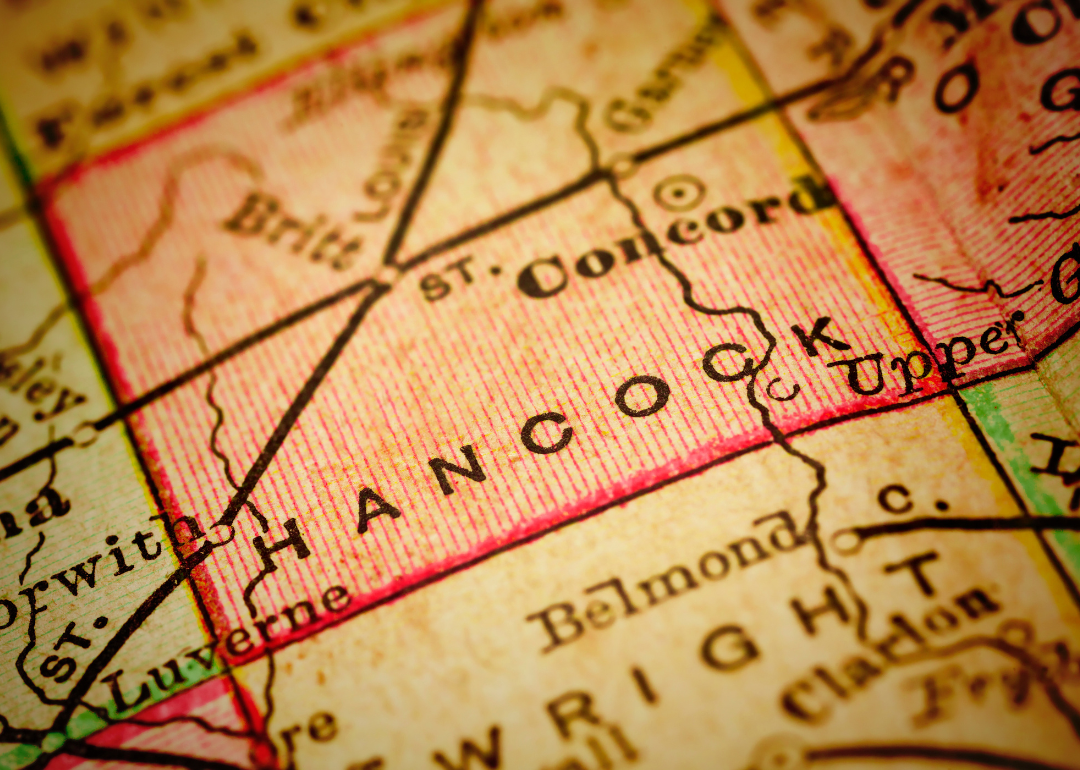
#30. Hancock County, Iowa
– Overall Rank: 985
– Population: 10,790
– Median household income: $67,865
– Median home value: $116,000 (81% own)
– Median rent: $782 (19% rent)
– Top public schools: West Hancock Elementary School (grade A minus), Garner-Hayfield-Ventura High School (grade A minus), Garner-Hayfield-Ventura Junior High School (grade B+)
– Top private schools: Kanawha Christian School (grade unavailable)
– Top places: Forest City (grade A minus), Garner (grade B+), Orthel Township (grade A)
About
Hancock County is defined by its agricultural strength, small-town values, and open rural landscape. The local economy centers on farming, especially corn and soybeans, along with livestock production and agri-business services. Flat fields, quiet roads, and close-knit communities shape the area’s peaceful character.
The community values tradition, hard work, and neighborly support through fairs, school events, and civic activities. Development is steady and focused on supporting essential services while preserving rural identity. Residents enjoy a simple, grounded lifestyle rooted in the rhythms of the land and community life.
Where is Hancock County?
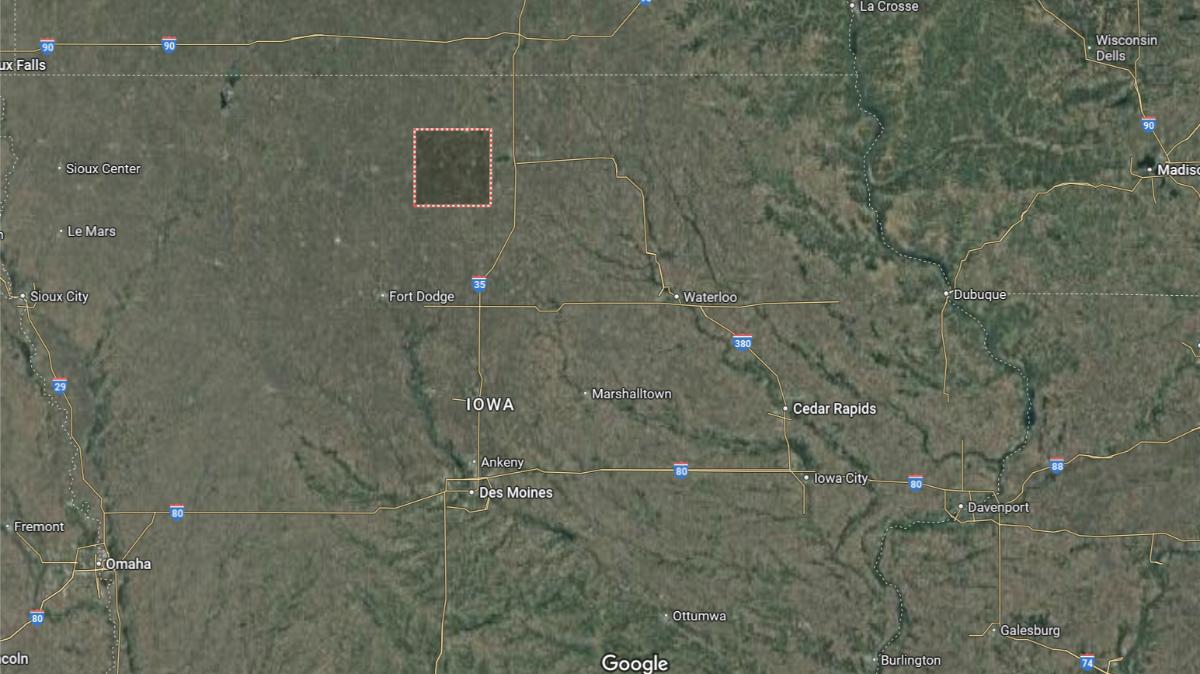
Hancock County is located in north-central Iowa, within the Prairie Pothole Region. The county seat, Garner, is about 30 miles west of Mason City and approximately 60 miles southeast of Estherville. It is around 120 miles north of Des Moines.
The county lies about 90 miles south of the Minnesota border near Fairmont and roughly 140 miles northwest of Waterloo. Hancock County is also about 70 miles northeast of Fort Dodge. Its location provides access to regional highways and supports a strong agricultural economy.

#29. Taylor County, Iowa
– Overall Rank: 982
– Population: 5,916
– Median household income: $65,926
– Median home value: $104,500 (79% own)
– Median rent: $636 (21% rent)
– Top public schools: Bedford Elementary School (grade A minus), Bedford High School (grade A minus), Lenox Elementary School (grade B+)
– Top places: Grove Township (grade B+), Platte Township (grade B+), Bedford Township (grade B+)
About
Taylor County is shaped by its agricultural foundation, rolling countryside, and strong rural traditions. The economy relies heavily on crop farming, livestock, and local businesses that support the surrounding communities. Scenic fields and small towns create a quiet, self-sustaining atmosphere.
The community values family, hard work, and close connections through local gatherings, school events, and seasonal fairs. Development remains modest, focused on maintaining essential services and preserving rural character. Residents enjoy a steady, down-to-earth lifestyle rooted in heritage, land, and community pride.
Where is Taylor County?

Taylor County is located in the southwestern part of Iowa, along the border with Missouri. The county seat, Bedford, is about 90 miles southwest of Des Moines and approximately 40 miles west of Creston. It is around 80 miles southeast of Council Bluffs.
The county lies about 50 miles north of Maryville, Missouri, and roughly 110 miles east of Lincoln, Nebraska. Taylor County is also about 130 miles south of Fort Dodge. Its position near the state line connects rural communities across Iowa and Missouri.
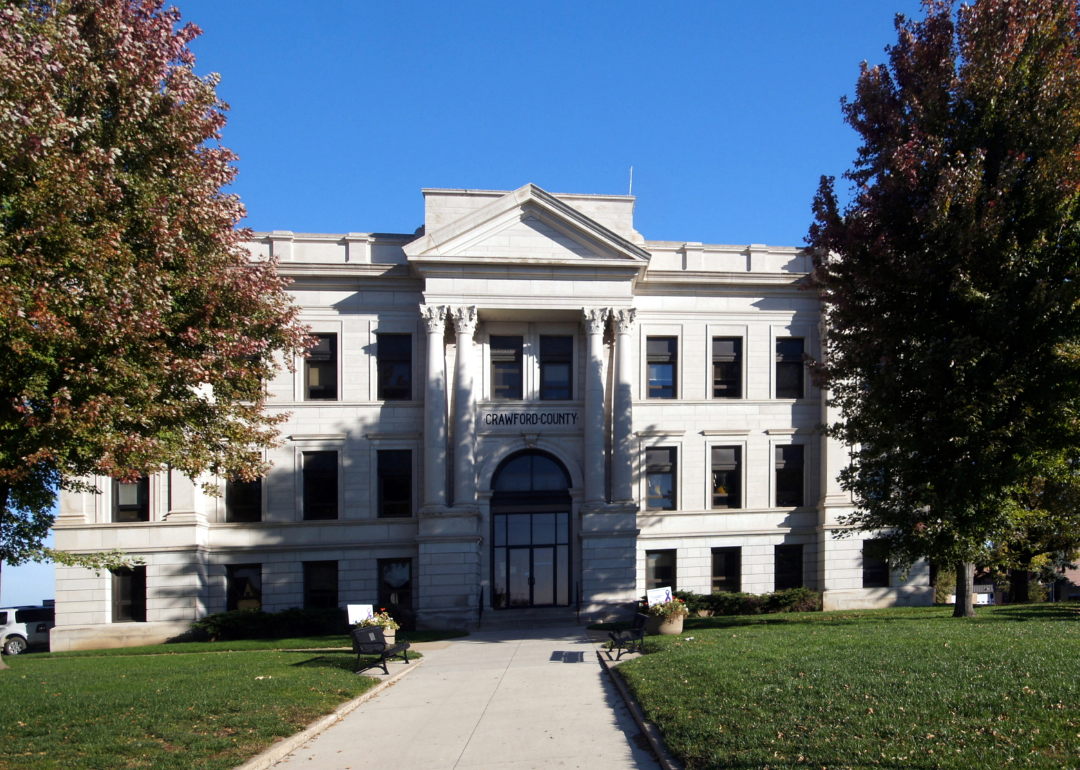
#28. Crawford County, Iowa
– Overall Rank: 972
– Population: 16,450
– Median household income: $61,188
– Median home value: $118,400 (74% own)
– Median rent: $732 (26% rent)
– Top public schools: Schleswig Elementary School (grade B+), Ar-We-VA Elementary School (grade B+), Denison High School (grade B)
– Top private schools: St. Rose of Lima School (grade unavailable), Zion Lutheran School (grade unavailable)
– Top places: Denison (grade B+), Schleswig (grade B+), West Side Township (grade B+)
About
Crawford County is known for its agricultural heritage, cultural diversity, and strong sense of rural community. The economy is driven by farming, livestock production, and food processing, supported by small businesses and local enterprises. Rolling hills and open farmland provide a scenic backdrop for daily life.
The community values tradition, family, and inclusion through festivals, school events, and civic activities. Development is balanced, aiming to enhance infrastructure while preserving the area’s rural identity. Residents enjoy a welcoming, hardworking lifestyle rooted in both heritage and community connection.
Where is Crawford County?
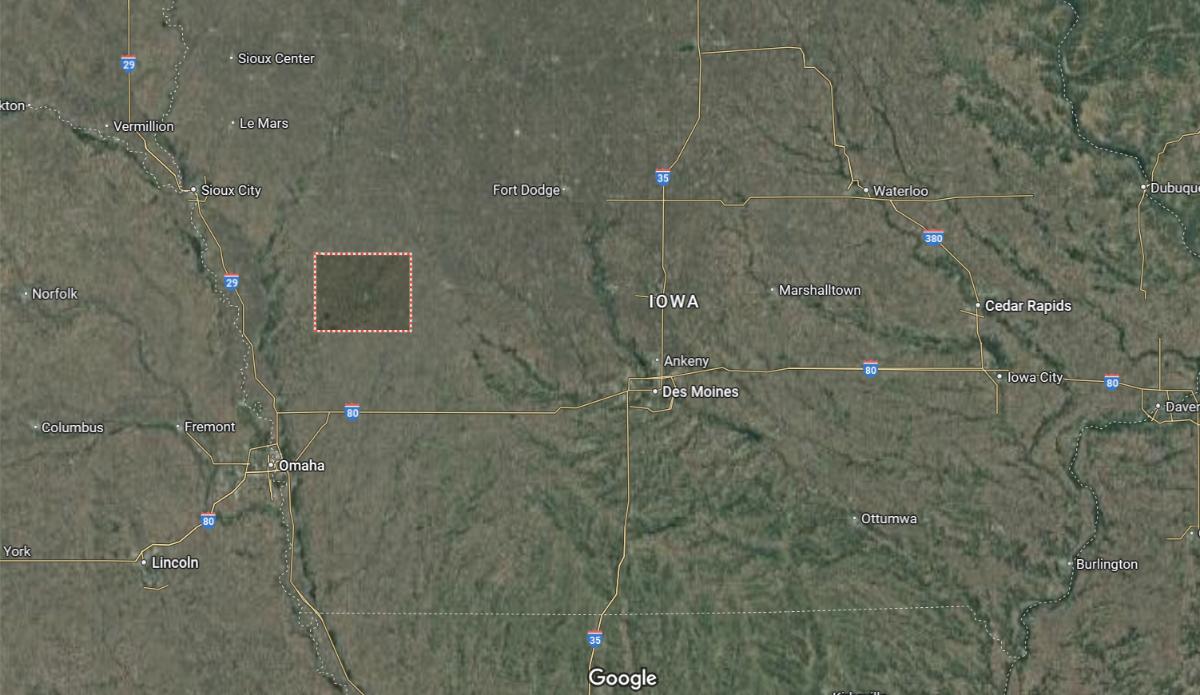
Crawford County is located in western Iowa, within the Loess Hills region. The county seat, Denison, is about 65 miles east of Sioux City and approximately 70 miles west of Carroll. It is around 95 miles northwest of Des Moines.
The county lies about 60 miles southeast of Sioux Falls, South Dakota, and roughly 120 miles north of Omaha, Nebraska. Crawford County is also about 85 miles southwest of Fort Dodge. Its location along major routes supports access to regional agricultural and trade centers.
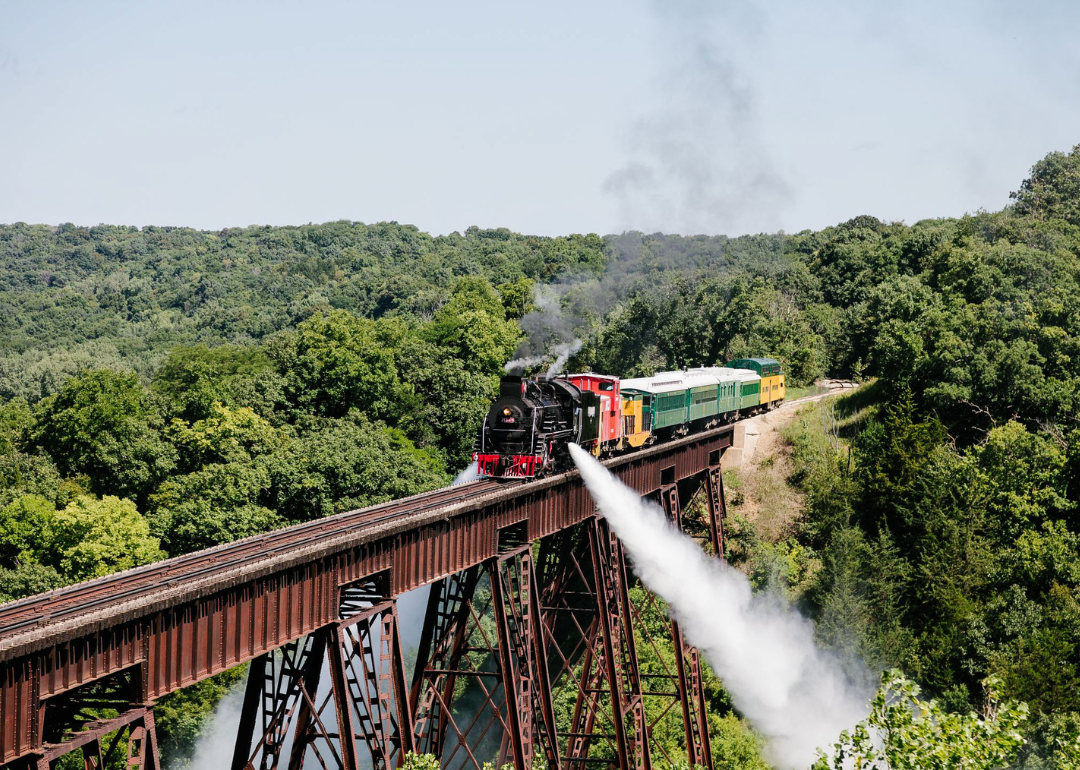
#27. Boone County, Iowa
– Overall Rank: 969
– Population: 26,700
– Median household income: $75,759
– Median home value: $171,600 (80% own)
– Median rent: $852 (20% rent)
– Top public schools: United Community School South (grade A minus), Howe Elementary School (grade B+), Ogden High School (grade B+)
– Top private schools: Sacred Heart School (grade unavailable), Trinity Lutheran School (grade unavailable)
– Top places: Boone (grade B), Colfax Township (grade A minus), Jackson Township (grade A minus)
About
Boone County blends agricultural strength with a touch of industrial development and natural beauty. The economy is supported by farming, manufacturing, and transportation services, providing a solid base for both rural and town life. Scenic landscapes, trails, and parks enhance the quality of life for residents.
The community values tradition, innovation, and civic pride through fairs, educational programs, and local events. Growth is steady, focused on supporting infrastructure while preserving the area’s character. Residents enjoy a balanced lifestyle rooted in heritage, progress, and close community ties.
Where is Boone County?
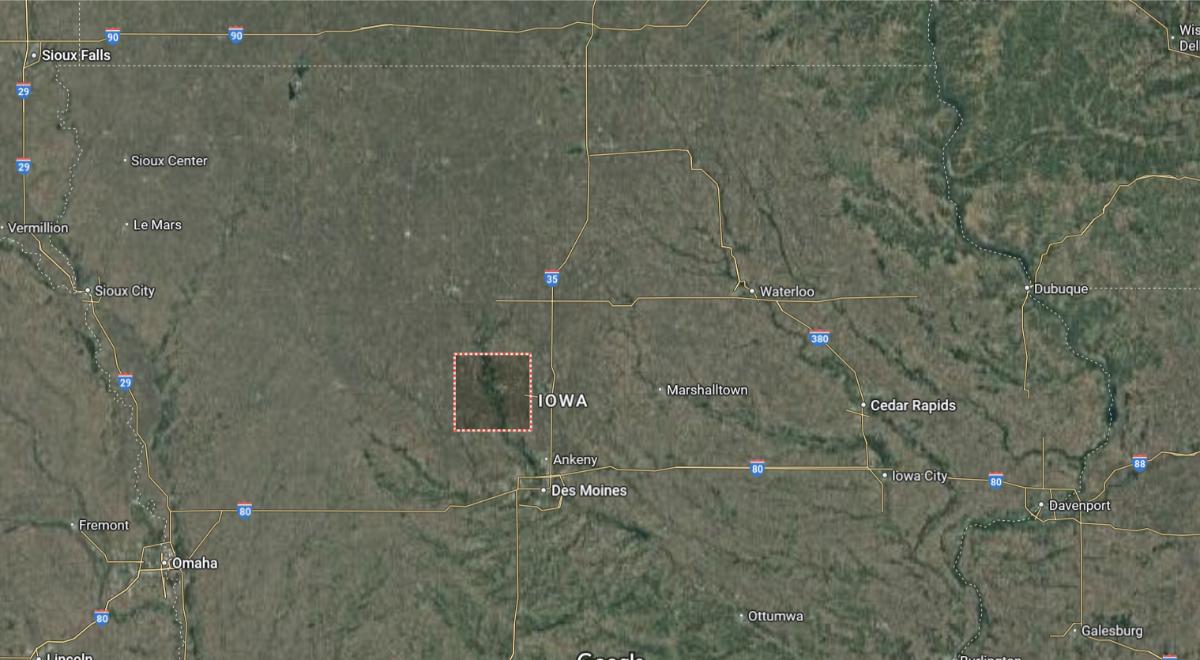
Boone County is located in central Iowa, within the Des Moines metropolitan area region. The county seat, Boone, is about 15 miles west of Ames and approximately 35 miles north of Des Moines. It is around 55 miles southeast of Fort Dodge.
The county lies about 110 miles south of Mason City and roughly 85 miles northwest of Ottumwa. Boone County is also about 90 miles northeast of Council Bluffs. Its central location supports strong connections to education, agriculture, and transportation networks.

#26. Calhoun County, Iowa
– Overall Rank: 966
– Population: 9,893
– Median household income: $65,614
– Median home value: $104,900 (79% own)
– Median rent: $696 (21% rent)
– Top public schools: Prairie Valley Elementary School (grade B+), South Central Calhoun Elementary School (grade B), South Central Calhoun High School (grade B minus)
– Top private schools:
– Top places: Garfield Township (grade B), Twin Lakes Township (grade B), Twin Lakes (grade B)
About
Calhoun County is defined by its rich farmland, quiet towns, and strong agricultural roots. The economy revolves around corn and soybean production, livestock farming, and support from small local businesses. Flat fields and open skies create a peaceful, rural setting.
The community values self-reliance, tradition, and neighborly support through local events, school activities, and civic involvement. Development is modest, focused on maintaining essential services and preserving the rural way of life. Residents enjoy a steady, grounded lifestyle connected to the land and community heritage.
Where is Calhoun County?
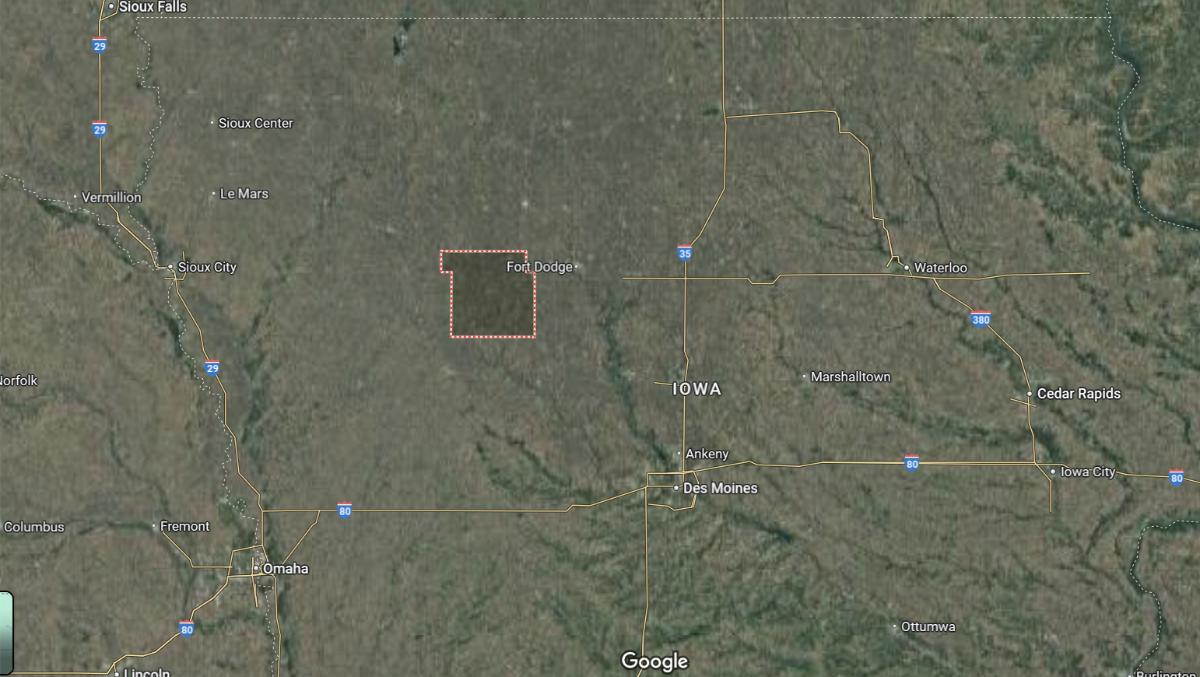
Calhoun County is located in northwestern Iowa, within the state’s agricultural heartland. The county seat, Rockwell City, is about 25 miles southeast of Storm Lake and approximately 30 miles west of Fort Dodge. It is around 95 miles northwest of Des Moines.
The county lies about 100 miles south of the Minnesota border and roughly 130 miles northeast of Sioux City. Calhoun County is also about 75 miles west of Ames. Its location supports a strong rural economy with access to regional trade routes and farming infrastructure.

#25. Warren County, Iowa
– Overall Rank: 915
– Population: 52,709
– Median household income: $89,741
– Median home value: $234,300 (82% own)
– Median rent: $943 (18% rent)
– Top public schools: Norwalk Senior High School (grade B+), Lakewood Elementary School (grade B+), Orchard Hills Elementary School (grade B+)
– Top private schools: Victory Christian Academy (grade unavailable), Cadence Academy Before & After School – Norwalk (grade unavailable)
– Top places: Norwalk (grade A minus), Indianola (grade B+), Carlisle (grade B+)
About
Warren County blends agricultural tradition with suburban growth and a strong sense of community. The economy is supported by farming, education, small businesses, and expanding residential development. Rolling farmland, parks, and quiet neighborhoods offer both beauty and comfort.
The community values education, civic pride, and family life through school programs, community events, and thoughtful planning. Development is balanced to preserve rural charm while enhancing access to services and opportunities. Residents enjoy a well-rounded lifestyle rooted in tradition, progress, and close community ties.
Where is Warren County?
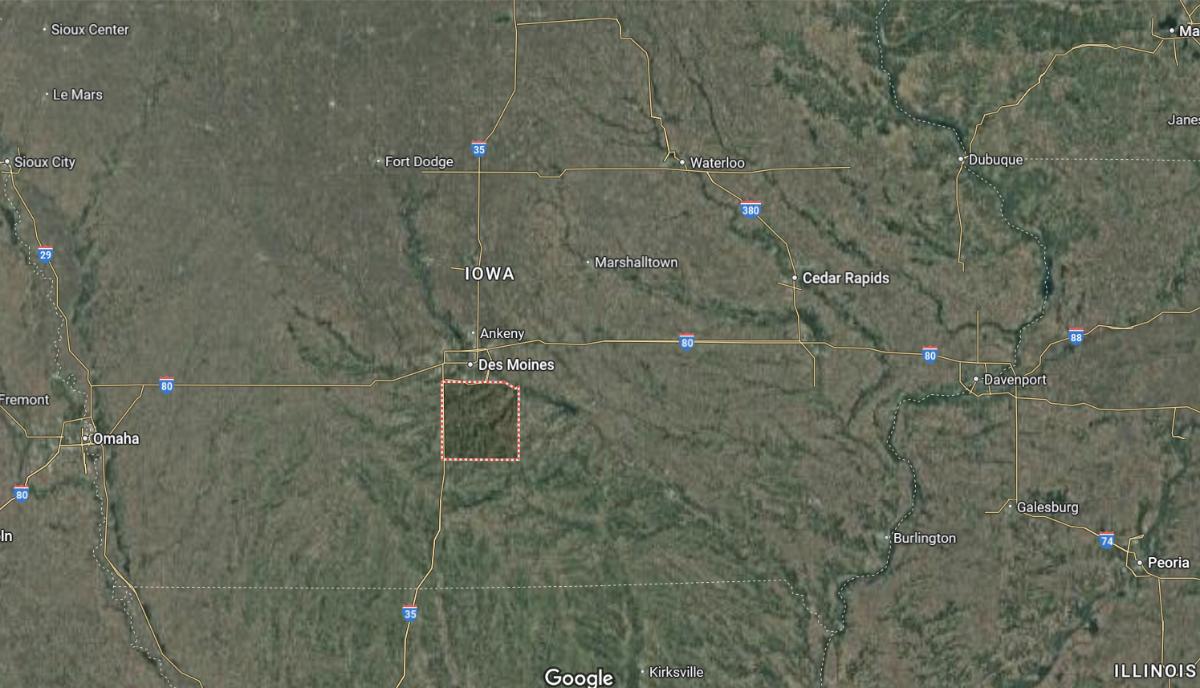
Warren County is located in south-central Iowa, just south of the Des Moines metropolitan area. The county seat, Indianola, is about 20 miles south of Des Moines and approximately 45 miles northeast of Winterset. It is around 85 miles northwest of Ottumwa.
The county lies about 100 miles southeast of Fort Dodge and roughly 120 miles southwest of Cedar Rapids. Warren County is also about 65 miles north of the Missouri border. Its proximity to the state capital supports strong economic and transportation connections.

#24. Buena Vista County, Iowa
– Overall Rank: 850
– Population: 20,687
– Median household income: $62,662
– Median home value: $138,100 (70% own)
– Median rent: $781 (30% rent)
– Top public schools: Alta Aurelia High School (grade B+), Sioux Central Elementary School (grade B), Newell-Fonda High School (grade B)
– Top private schools: Storm Lake St. Mary’s Schools (grade A)
– Top places: Storm Lake (grade B+), Hayes Township (grade B+), Brooke Township (grade B+)
About
Buena Vista County is shaped by its agricultural economy, cultural diversity, and strong community values. Farming, food processing, and small manufacturing form the backbone of the local economy, with support from educational and healthcare institutions. Open farmland and welcoming towns create a stable and connected environment.
The community values inclusion, tradition, and progress through festivals, school activities, and civic engagement. Development focuses on supporting infrastructure and services while preserving the area’s rural identity. Residents enjoy a lifestyle rooted in hard work, community pride, and cultural richness.
Where is Buena Vista County?
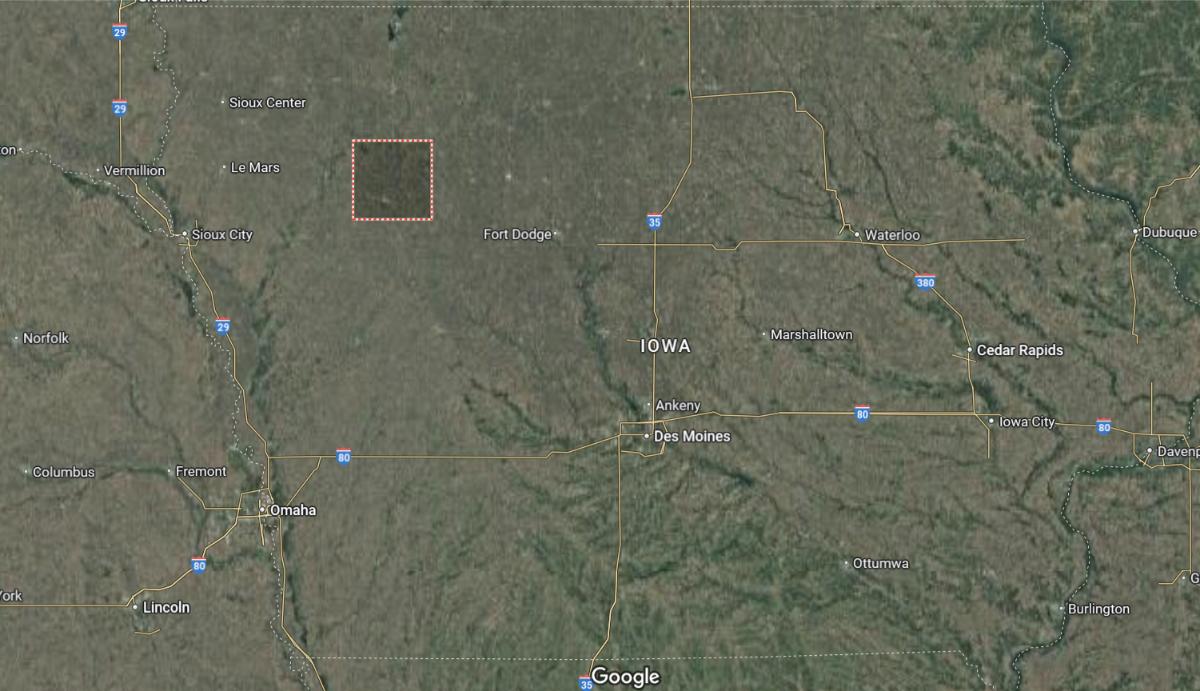
Buena Vista County is located in northwestern Iowa, within the state’s Prairie Lakes region. The county seat, Storm Lake, is about 70 miles east of Sioux City and approximately 55 miles west of Fort Dodge. It is around 120 miles northwest of Des Moines.
The county lies about 90 miles south of the Minnesota border and roughly 100 miles northeast of Sioux Falls, South Dakota. Buena Vista County is also about 95 miles north of Carroll. Its location supports agriculture, education, and regional travel across northwest Iowa.
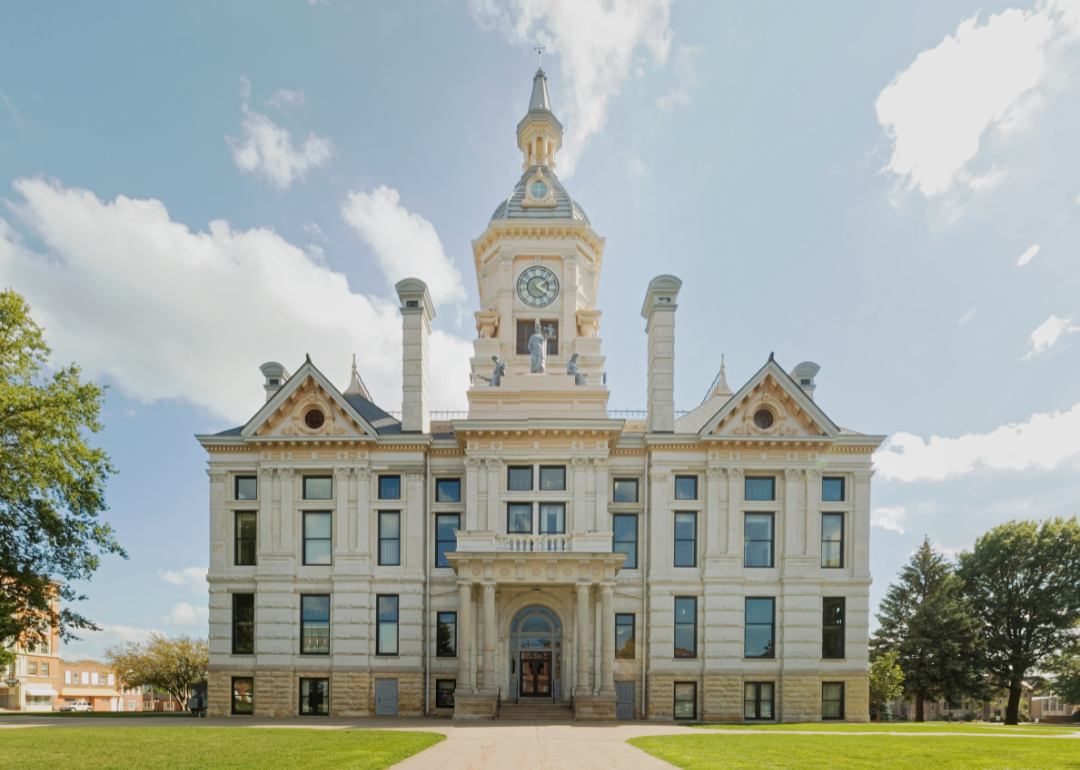
#23. Marshall County, Iowa
– Overall Rank: 790
– Population: 40,049
– Median household income: $70,828
– Median home value: $125,900 (74% own)
– Median rent: $832 (26% rent)
– Top public schools: West Marshall High School (grade A minus), West Marshall Middle School (grade B+), West Marshall Elementary School (grade B)
– Top private schools: Marshalltown Area Catholic School (grade unavailable), Marshalltown Christian School (grade unavailable), Clemons Lutheran School (grade unavailable)
– Top places: Marshalltown (grade B minus), Marietta Township (grade A minus), Vienna Township (grade B+)
About
Marshall County combines a strong industrial and agricultural base with a diverse and vibrant community. Its economy thrives on manufacturing, farming, and local businesses that provide stability and opportunity. Rolling fields, urban amenities, and cultural events offer a well-rounded environment.
The community values resilience, inclusion, and civic involvement through festivals, schools, and public programs. Development is focused on revitalization, infrastructure, and maintaining a balanced rural-urban character. Residents enjoy a lifestyle grounded in tradition, progress, and community pride.
Where is Marshall County?

Marshall County is located in central Iowa, within the state’s heartland. The county seat, Marshalltown, is about 25 miles east of Ames and approximately 55 miles northeast of Des Moines. It is around 45 miles southwest of Waterloo.
The county lies about 100 miles south of Mason City and roughly 90 miles northwest of Iowa City. Marshall County is also about 60 miles west of Cedar Rapids. Its central location provides strong transportation links and access to surrounding urban centers.
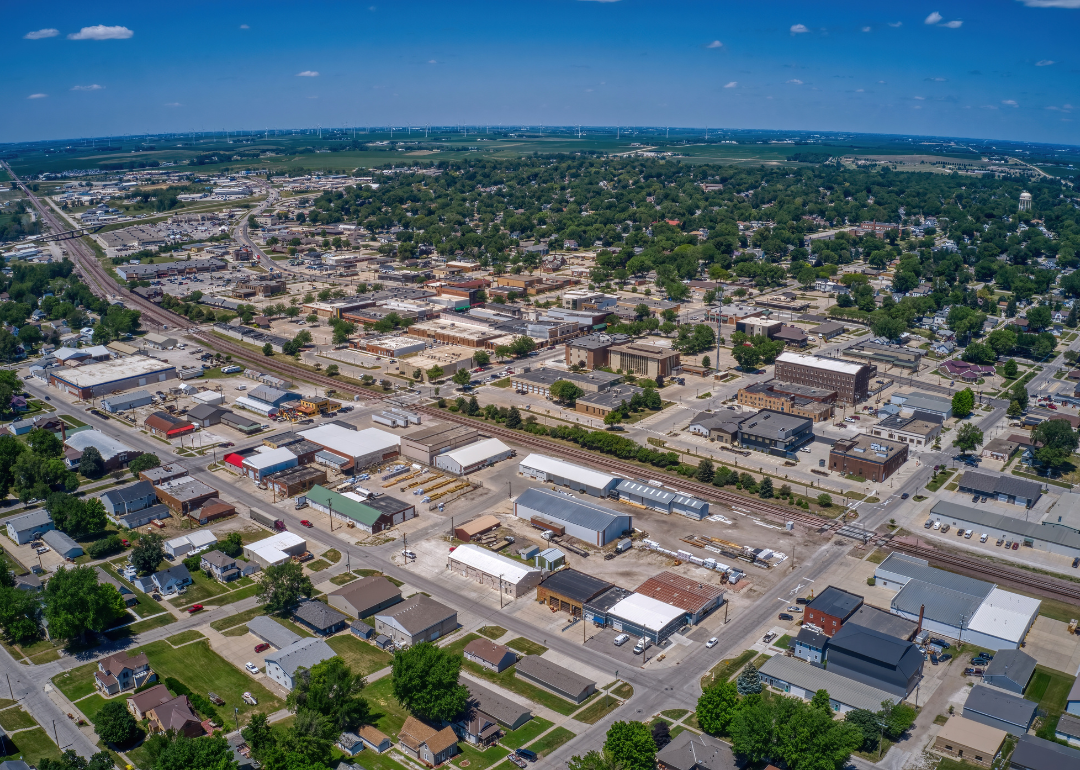
#22. Carroll County, Iowa
– Overall Rank: 770
– Population: 20,728
– Median household income: $68,041
– Median home value: $162,000 (76% own)
– Median rent: $697 (24% rent)
– Top public schools: IKM-Manning Middle School (grade A minus), Fairview Elementary School (grade B+), Carroll High School (grade B+)
– Top private schools: Kuemper Catholic School (grade C+)
– Top places: Carroll (grade B+), Grant Township (grade B+), Manning (grade B+)
About
Carroll County is known for its strong agricultural economy, close-knit communities, and well-kept rural charm. The local economy relies on corn and livestock farming, food processing, and small manufacturing. Tree-lined streets, farmland, and active small towns create a balanced, peaceful setting.
The community values tradition, education, and civic pride through local festivals, school events, and volunteer involvement. Development is steady and aimed at preserving quality of life while supporting local growth. Residents enjoy a grounded lifestyle rooted in hard work, heritage, and strong community ties.
Where is Carroll County?
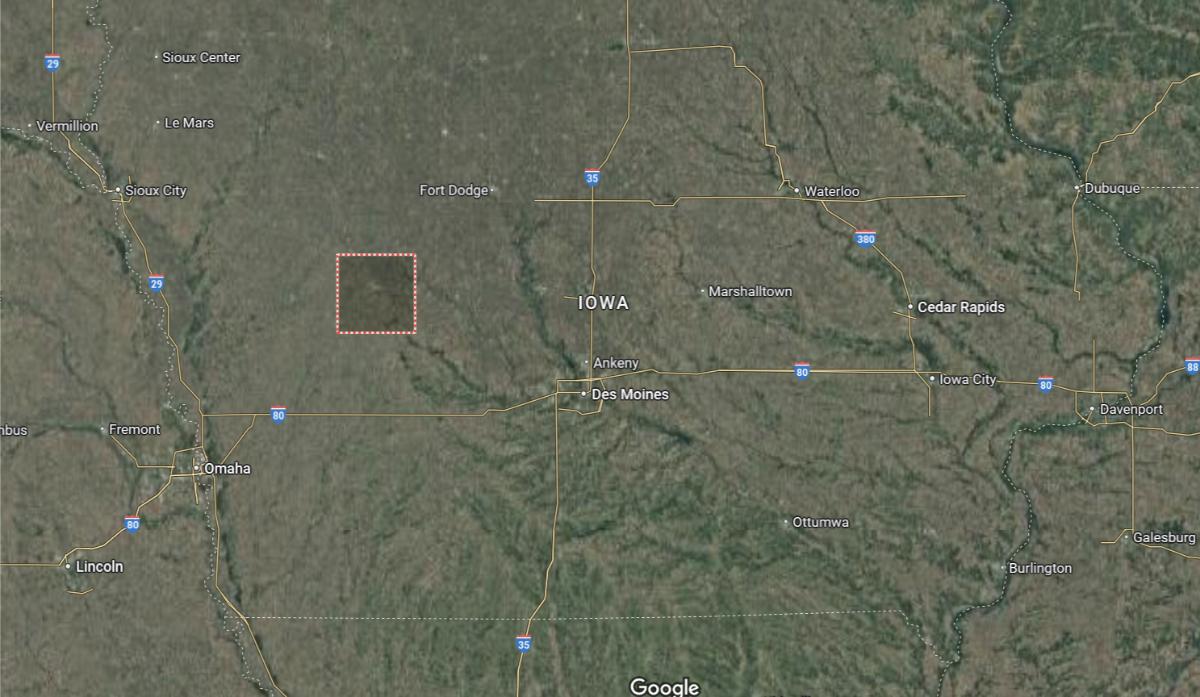
Carroll County is located in west-central Iowa, within a primarily agricultural region. The county seat, Carroll, is about 65 miles northwest of Des Moines and approximately 30 miles east of Denison. It is around 55 miles southwest of Fort Dodge.
The county lies about 110 miles south of the Minnesota border and roughly 85 miles northeast of Sioux City. Carroll County is also about 40 miles west of Jefferson. Its location supports regional farming, commerce, and small-town connections across central Iowa.
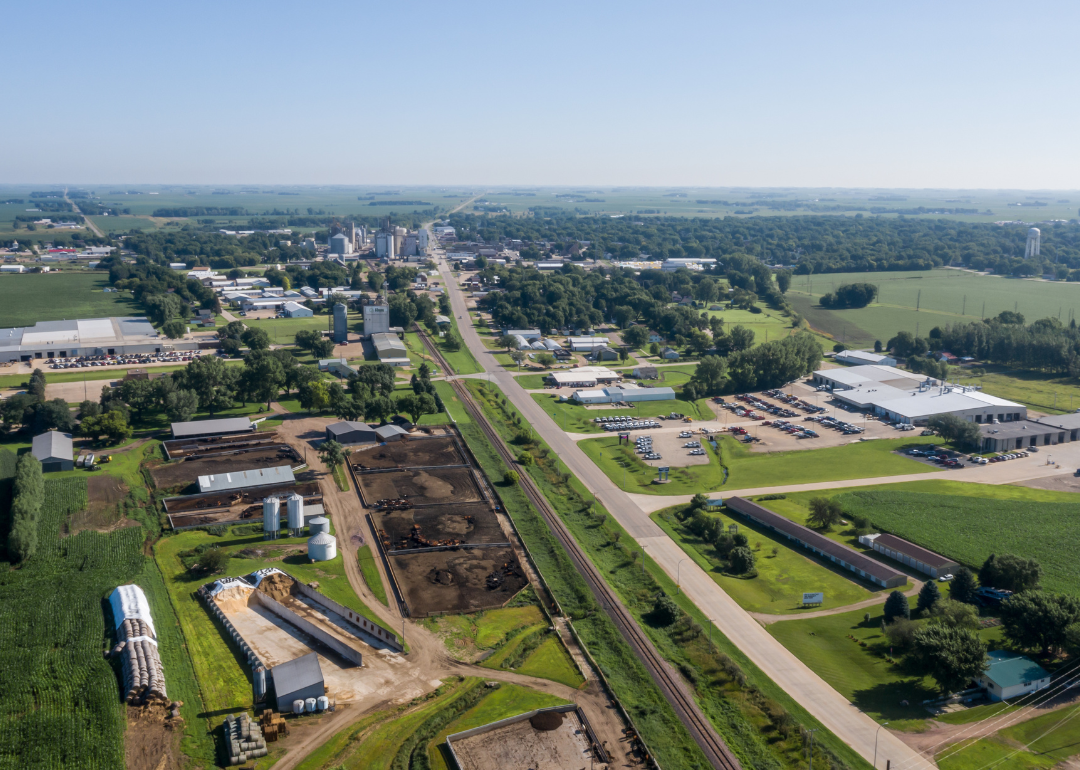
#21. O’Brien County, Iowa
– Overall Rank: 745
– Population: 14,138
– Median household income: $65,076
– Median home value: $141,900 (76% own)
– Median rent: $691 (24% rent)
– Top public schools: East Elementary School (grade A minus), Sheldon High School (grade B+), Sheldon Middle School (grade B+)
– Top private schools: Sanborn Christian School (grade unavailable), Sheldon Christian School (grade unavailable), St. Patrick Elementary School (grade unavailable)
– Top places: Sheldon (grade A minus), Summit Township (grade A minus), Carroll Township (grade A minus)
About
O’Brien County is defined by its fertile farmland, agricultural strength, and well-organized rural communities. The local economy centers on corn, soybeans, and livestock production, supported by agribusiness and small industries. Open fields, quiet roads, and tidy towns shape a landscape rooted in productivity and pride.
The community values hard work, stability, and tradition through fairs, school programs, and local engagement. Development is modest and focused on maintaining essential services while preserving rural character. Residents enjoy a steady, grounded lifestyle built on farming heritage and strong community connections.
Where is O’Brien County?
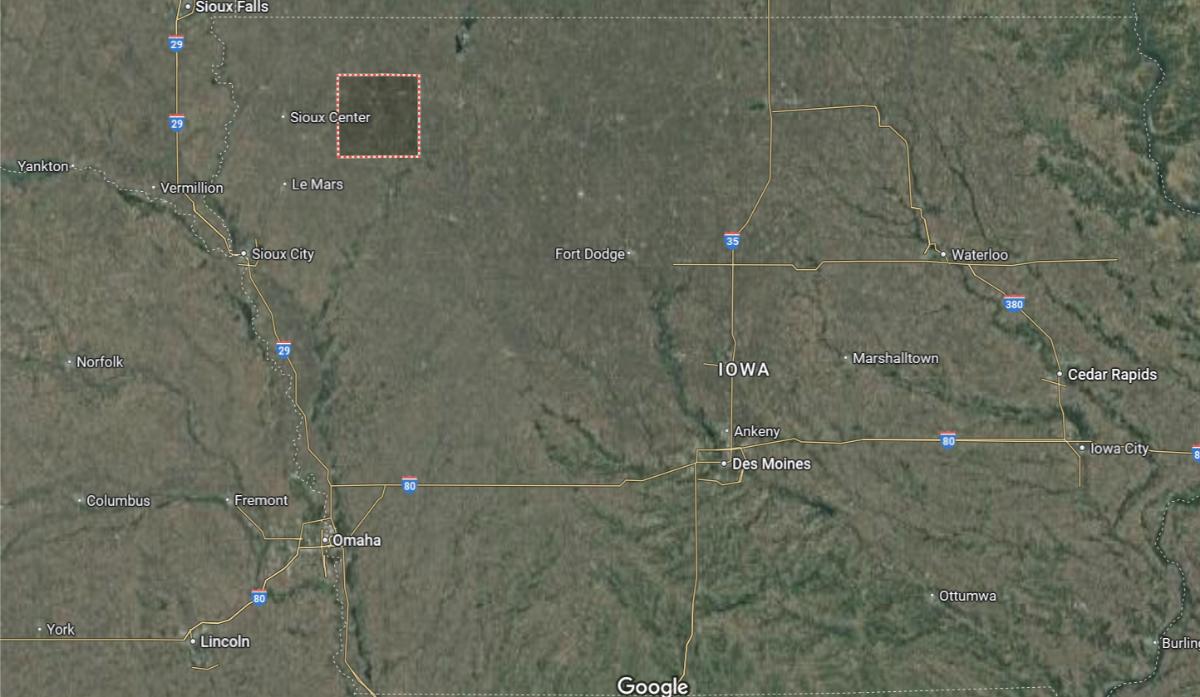
O’Brien County is located in northwestern Iowa, near the Minnesota and South Dakota borders. The county seat, Primghar, is about 35 miles southeast of Sioux Center and approximately 65 miles northeast of Sioux City. It is around 90 miles northwest of Fort Dodge.
The county lies about 30 miles south of Worthington, Minnesota, and roughly 100 miles southeast of Brookings, South Dakota. O’Brien County is also about 140 miles northwest of Des Moines. Its rural location supports agriculture and regional trade across the tri-state area.
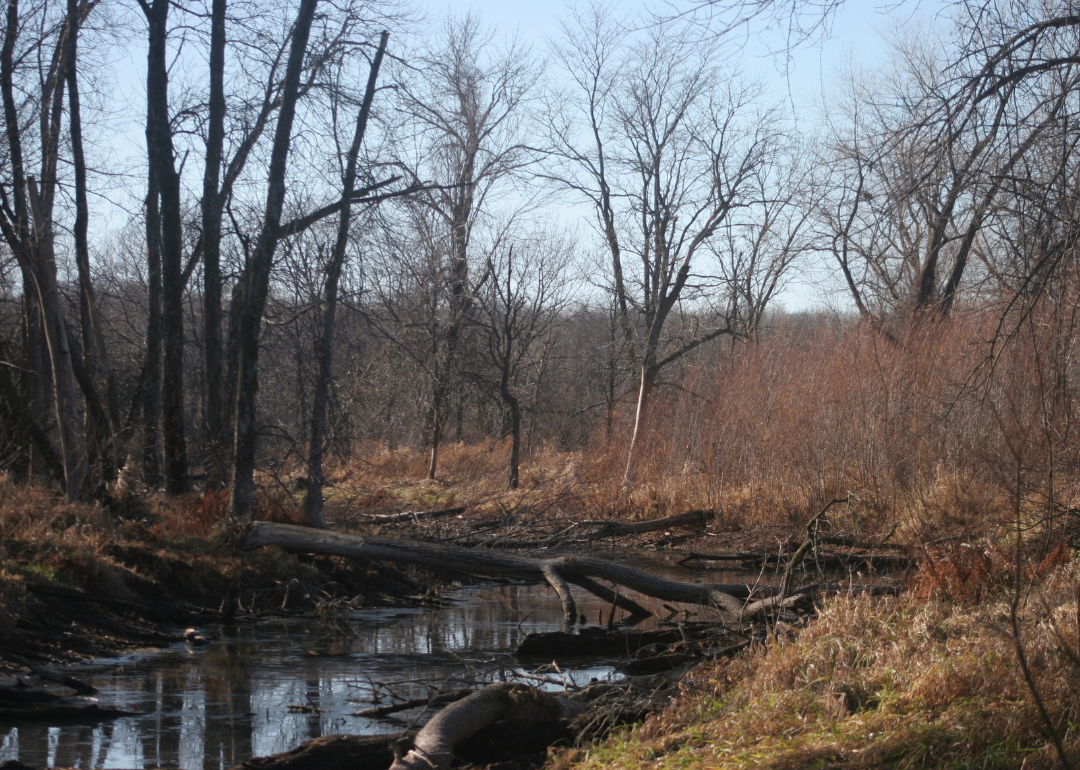
#20. Black Hawk County, Iowa
– Overall Rank: 736
– Population: 131,041
– Median household income: $62,329
– Median home value: $172,500 (65% own)
– Median rent: $932 (35% rent)
– Top public schools: Helen A. Hansen Elementary School (grade A minus), Orchard Hill Elementary School (grade A minus), Peet Junior High School (grade A minus)
– Top private schools: Waterloo Christian School (grade A minus), Valley Lutheran School (grade B+), Don Bosco High School (grade B+)
– Top places: Cedar Falls (grade A), Hudson (grade A minus), Waterloo (grade B minus)
About
Black Hawk County blends industrial strength, educational opportunity, and cultural diversity in a balanced setting. The economy is supported by manufacturing, healthcare, education, and technology, offering both urban amenities and employment variety. Parks, trails, and riverfront areas provide recreational and scenic value.
The community values inclusion, innovation, and civic pride through festivals, arts programs, and public initiatives. Development focuses on revitalization, infrastructure, and sustainable growth while honoring local heritage. Residents enjoy a dynamic lifestyle rooted in progress, tradition, and community connection.
Where is Black Hawk County?
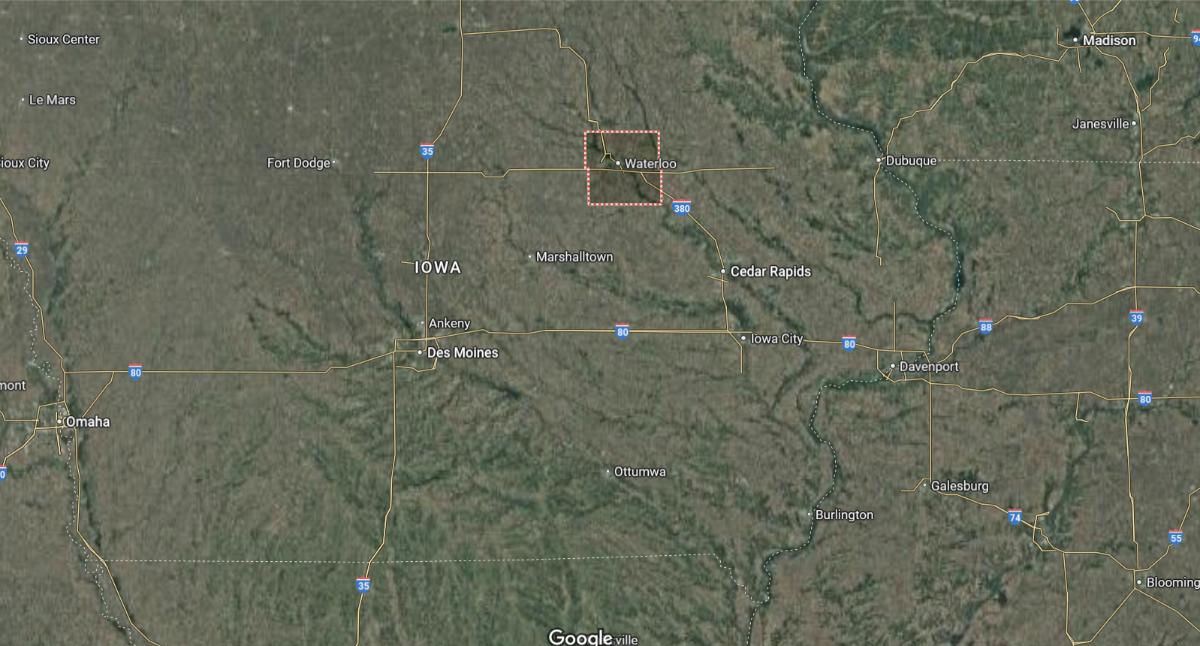
Black Hawk County is located in northeastern Iowa, within the Cedar Valley region. The county seat, Waterloo, is about 55 miles northwest of Cedar Rapids and approximately 90 miles northeast of Des Moines. It is around 50 miles south of Charles City.
The county lies about 70 miles west of the Mississippi River near Dubuque and roughly 90 miles south of the Minnesota border. Black Hawk County is also about 35 miles east of Iowa Falls. Its central position in eastern Iowa supports industry, education, and transportation links across the region.
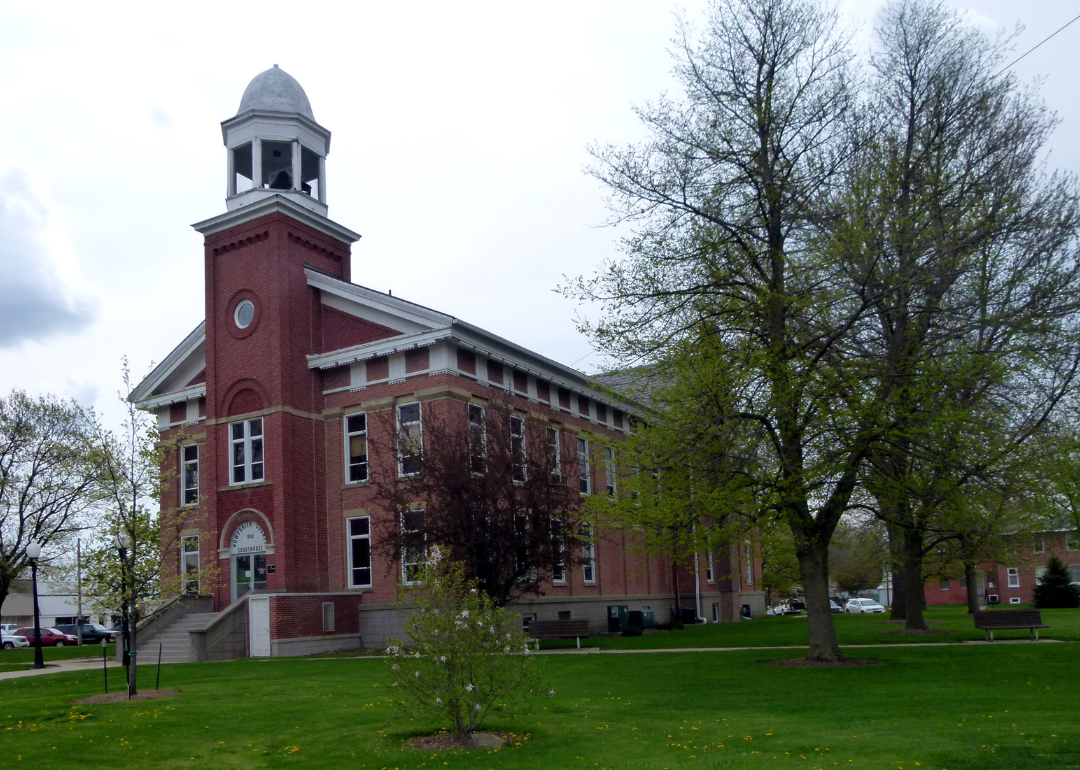
#19. Poweshiek County, Iowa
– Overall Rank: 733
– Population: 18,608
– Median household income: $61,192
– Median home value: $173,600 (71% own)
– Median rent: $850 (29% rent)
– Top public schools: Montezuma Elementary School (grade A), Davis Elementary School (grade A minus), Brooklyn-Guernsey-Malcom Elementary School (grade A minus)
– Top private schools: Central Iowa Christian School (grade unavailable)
– Top places: Grinnell (grade A minus), Sheridan Township (grade A minus), Malcom (grade B+)
About
Poweshiek County offers a blend of rural charm, educational influence, and agricultural strength. Its economy is supported by farming, local businesses, and educational institutions that add cultural and economic depth. Rolling farmland, historic architecture, and well-kept communities define the landscape.
The community values learning, tradition, and civic involvement through local events, school programs, and preservation efforts. Development is steady and focused on enhancing quality of life while maintaining small-town character. Residents enjoy a balanced lifestyle rooted in education, agriculture, and close community ties.
Where is Poweshiek County?
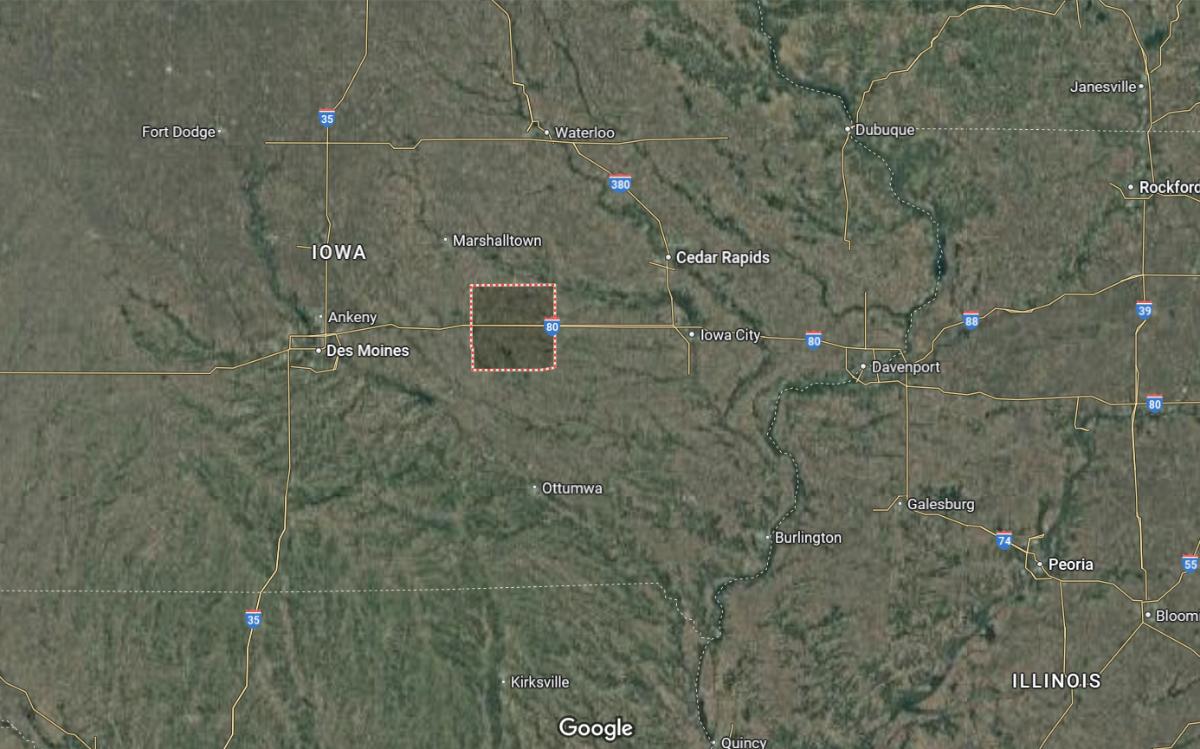
Poweshiek County is located in central-eastern Iowa, between the Des Moines and Iowa City regions. The county seat, Montezuma, is about 25 miles east of Grinnell and approximately 55 miles west of Iowa City. It is around 60 miles east of Des Moines.
The county lies about 75 miles south of Waterloo and roughly 90 miles northwest of Burlington. Poweshiek County is also about 85 miles north of the Missouri border. Its location along Interstate 80 supports travel and commerce across eastern and central Iowa.
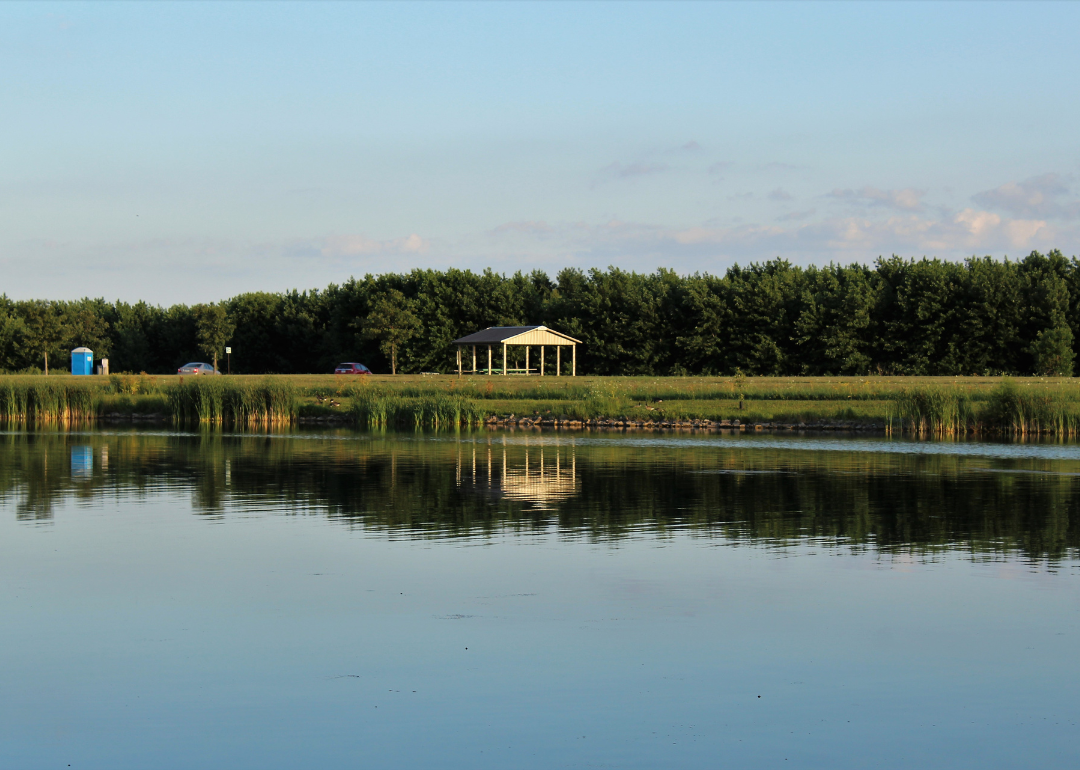
#18. Grundy County, Iowa
– Overall Rank: 728
– Population: 12,351
– Median household income: $80,701
– Median home value: $166,300 (83% own)
– Median rent: $742 (17% rent)
– Top public schools: Grundy Center Middle School (grade A minus), Grundy Center High School (grade A minus), Grundy Center Elementary School (grade B+)
– Top private schools: Timothy Christian School (grade unavailable)
– Top places: Grundy Center (grade A minus), Grant Township (grade A minus), Palermo Township (grade A minus)
About
Grundy County is defined by its rich farmland, strong agricultural economy, and close-knit rural communities. Corn and soybean production, livestock farming, and agri-businesses form the core of the local economy. Well-kept towns and open countryside offer a peaceful, productive setting.
The community values tradition, self-reliance, and civic pride through local events, school activities, and neighborly support. Development is modest, focused on sustaining essential services while preserving the area’s rural heritage. Residents enjoy a steady, grounded lifestyle rooted in family, farming, and strong community ties.
Where is Grundy County?

Grundy County is located in northeastern Iowa, in a region of rolling farmland. The county seat, Grundy Center, is about 20 miles southwest of Waterloo and approximately 60 miles northeast of Ames. It is around 75 miles north of Des Moines.
The county lies about 90 miles south of the Minnesota border and roughly 80 miles northwest of Cedar Rapids. Grundy County is also about 45 miles southeast of Fort Dodge. Its location supports agricultural activity and regional transportation access in north-central Iowa.
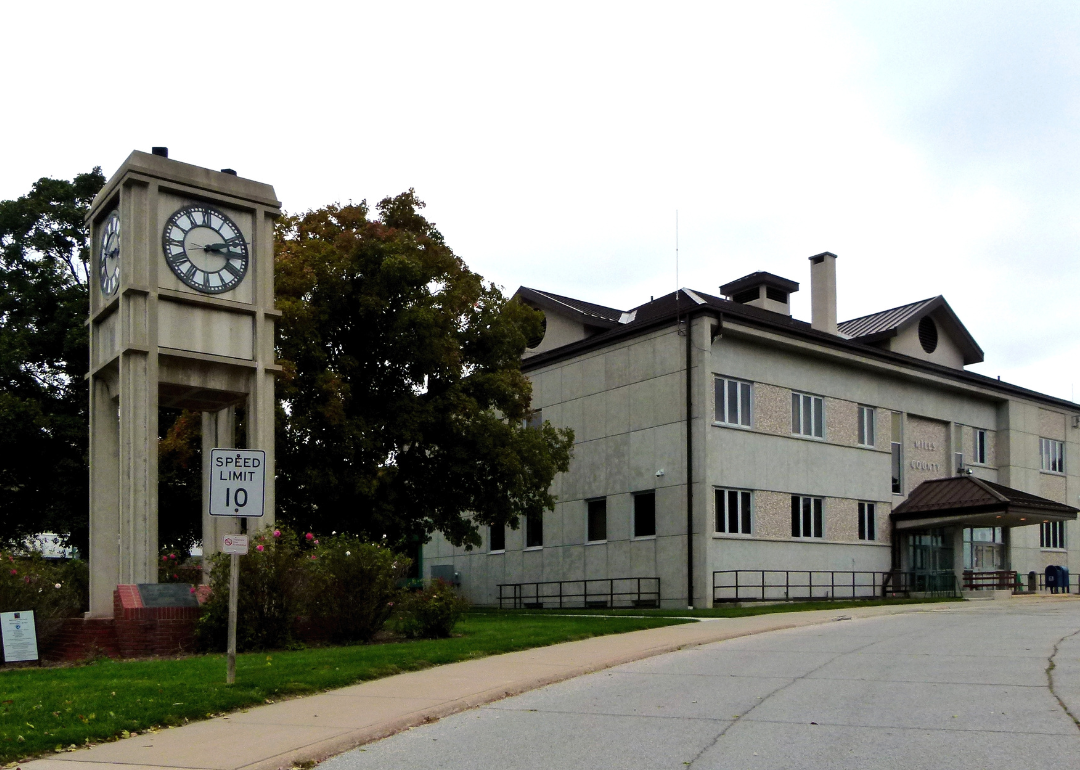
#17. Mills County, Iowa
– Overall Rank: 724
– Population: 14,605
– Median household income: $81,907
– Median home value: $225,500 (81% own)
– Median rent: $843 (19% rent)
– Top public schools: West Elementary School (grade A minus), Glenwood Middle School (grade B+), East Mills Jr. Sr. High School (grade B)
– Top private schools:
– Top places: Glenwood (grade B), Oak Township (grade A minus), Malvern (grade B+)
About
Mills County features a blend of rolling farmland, growing residential communities, and a strong agricultural base. The local economy relies on crop production, livestock farming, and expanding commerce supported by its strategic location. Scenic views, rural charm, and access to key routes offer both tranquility and connectivity.
The community values tradition, growth, and civic involvement through school activities, festivals, and local planning. Development is balanced to preserve rural character while supporting infrastructure and residential needs. Residents enjoy a lifestyle rooted in open space, opportunity, and strong community bonds.
Where is Mills County?
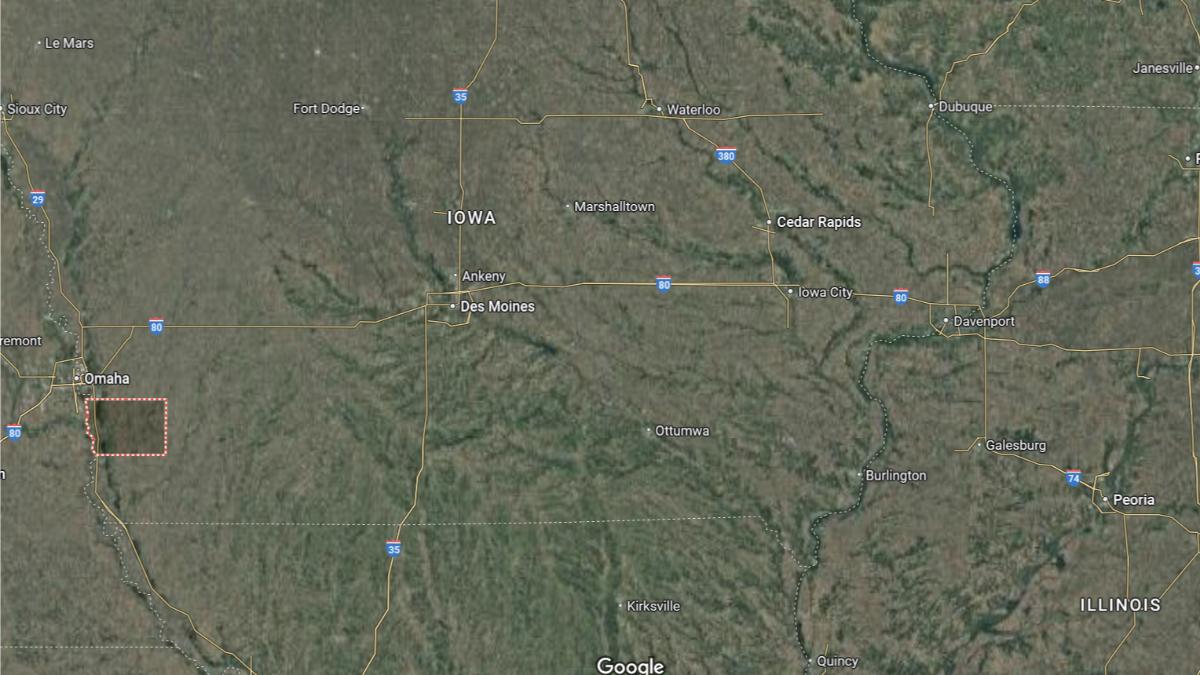
Mills County is located in southwestern Iowa, along the Missouri River and near the Nebraska border. The county seat, Glenwood, is about 25 miles southeast of Omaha, Nebraska and approximately 30 miles south of Council Bluffs. It is around 120 miles west of Des Moines.
The county lies about 85 miles north of the Kansas border and roughly 100 miles southwest of Carroll. Mills County is also about 70 miles west of Atlantic. Its position near major highways and metro areas supports cross-state commerce and travel.

#16. Winneshiek County, Iowa
– Overall Rank: 700
– Population: 20,050
– Median household income: $67,770
– Median home value: $225,400 (76% own)
– Median rent: $763 (24% rent)
– Top public schools: Decorah High School (grade A), Decorah Middle School (grade A minus), Turkey Valley Elementary School (grade A minus)
– Top private schools: St. Benedict Catholic School (grade unavailable), St. Teresa of Calcutta Catholic School (grade unavailable), Crossroads Academy (grade unavailable)
– Top places: Decorah (grade A), Decorah Township (grade A minus), Pleasant Township (grade B)
About
Winneshiek County is known for its scenic beauty, cultural heritage, and strong agricultural presence. The economy is supported by farming, education, tourism, and local businesses that reflect a balance of tradition and creativity. Rivers, wooded hills, and vibrant small towns create a unique and welcoming landscape.
The community values sustainability, arts, and civic pride through festivals, conservation efforts, and cultural events. Development is thoughtfully managed to enhance infrastructure while preserving natural and historical character. Residents enjoy a fulfilling lifestyle grounded in nature, heritage, and community engagement.
Where is Winneshiek County?
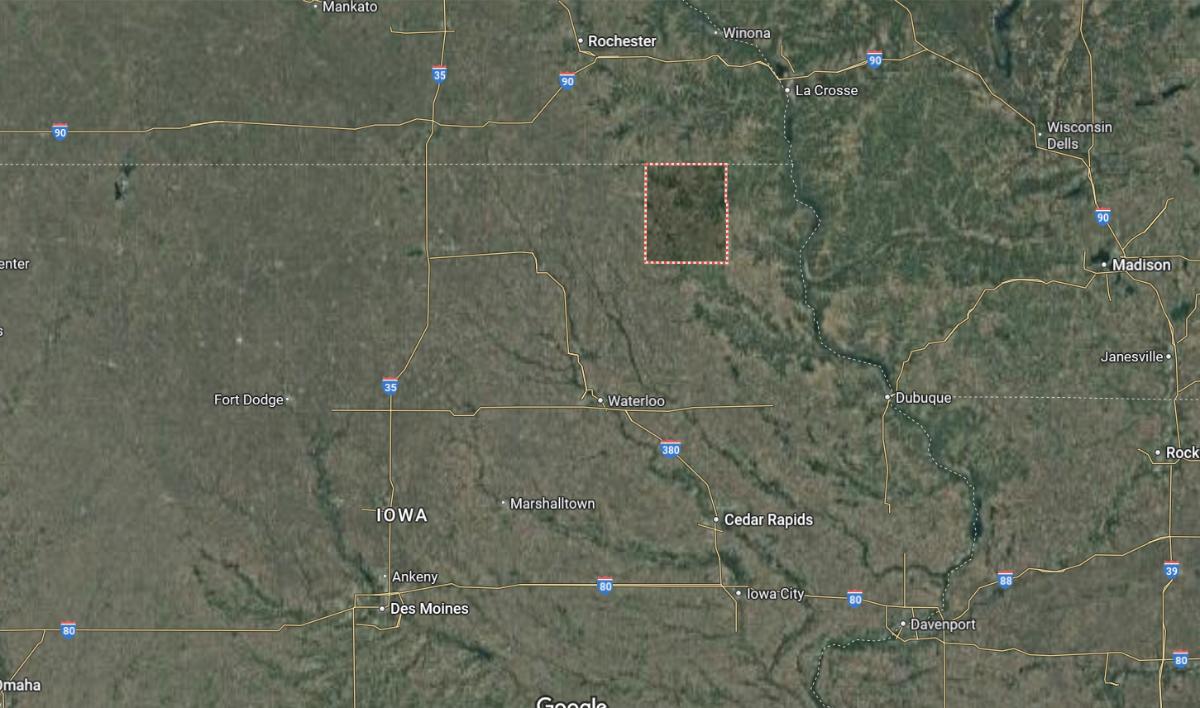
Winneshiek County is located in northeastern Iowa, near the Minnesota border. The county seat, Decorah, is about 15 miles south of the Minnesota state line and approximately 65 miles north of Waterloo. It is around 75 miles west of the Mississippi River near Prairie du Chien, Wisconsin.
The county lies about 150 miles northeast of Des Moines and roughly 110 miles northwest of Dubuque. Winneshiek County is also about 90 miles southeast of Rochester, Minnesota. Its scenic location in the Driftless Area supports tourism, agriculture, and regional culture.
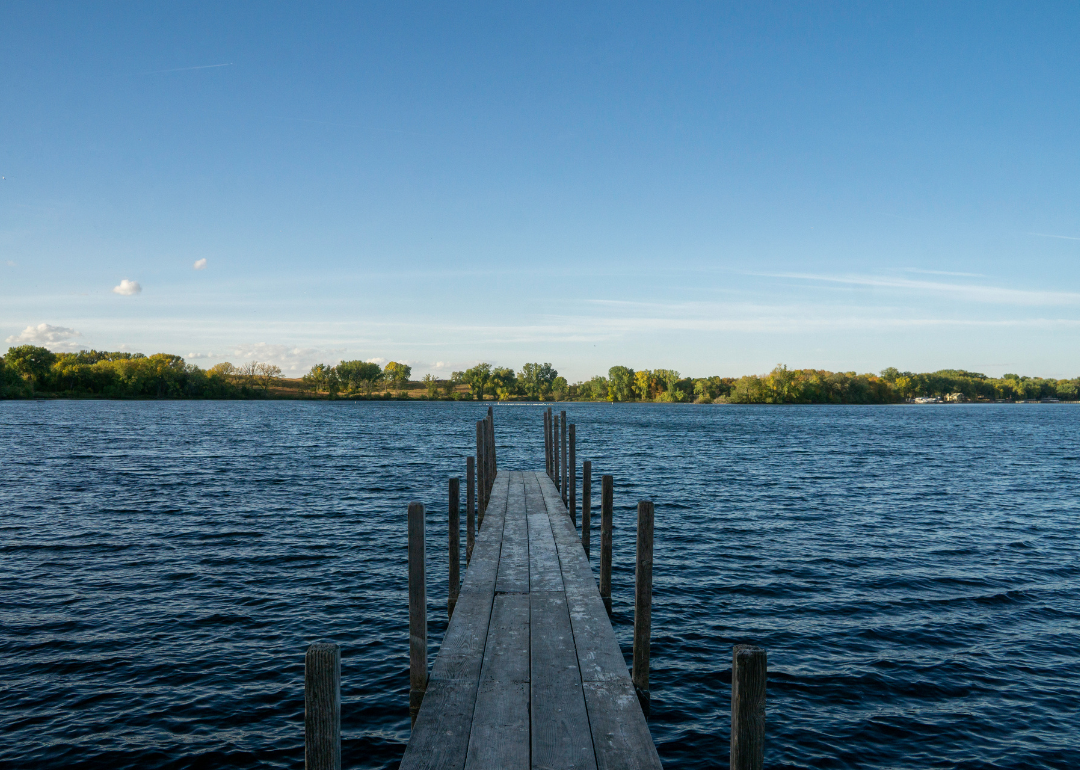
#15. Dickinson County, Iowa
– Overall Rank: 673
– Population: 17,692
– Median household income: $72,446
– Median home value: $236,100 (78% own)
– Median rent: $902 (22% rent)
– Top public schools: Spirit Lake High School (grade A minus), Okoboji Middle School (grade B+), Okoboji Elementary School (grade B)
– Top private schools:
– Top places: Spirit Lake (grade A minus), Milford (grade B), Wahpeton (grade A minus)
About
Dickinson County is defined by its natural lakes, tourism-driven economy, and vibrant seasonal activity. The area thrives on hospitality, recreation, and real estate, with agriculture also playing a supporting role. Scenic shorelines, parks, and resort communities make it a popular destination and a unique place to live.
The community values conservation, culture, and hospitality through festivals, arts, and environmental initiatives. Development balances tourism growth with preservation of natural resources and community identity. Residents enjoy a dynamic lifestyle shaped by outdoor recreation, local pride, and a welcoming spirit.
Where is Dickinson County?
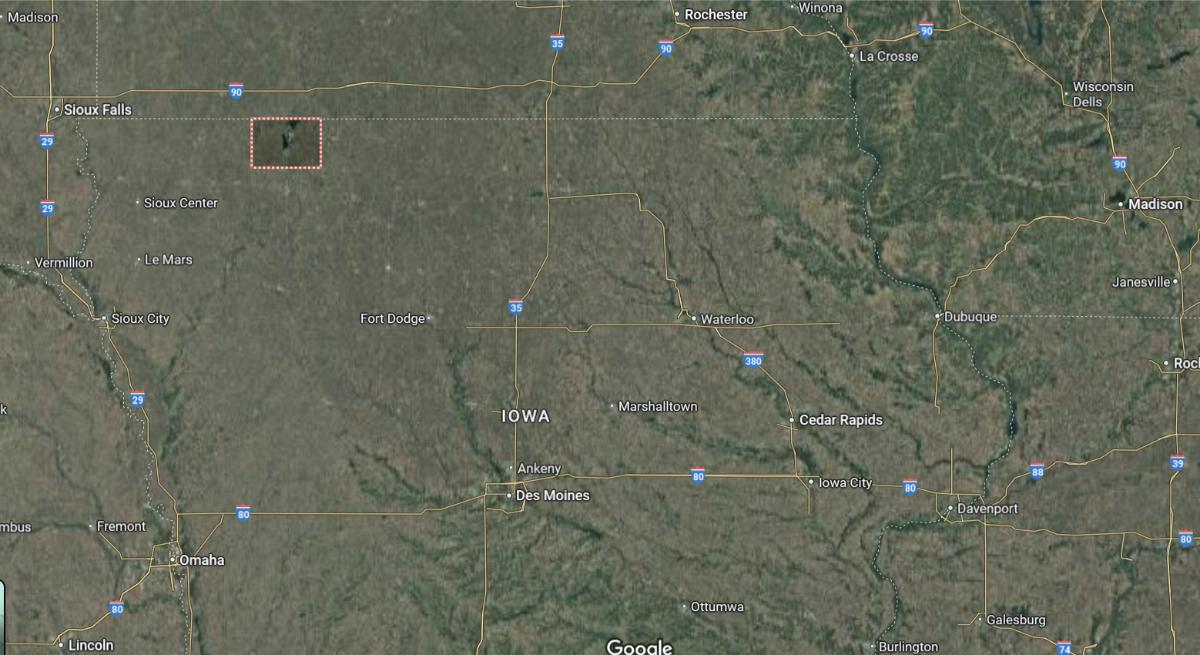
Dickinson County is located in northwestern Iowa, along the Minnesota border. The county seat, Spirit Lake, is about 20 miles south of Worthington, Minnesota and approximately 70 miles north of Storm Lake. It is around 95 miles northwest of Fort Dodge.
The county lies about 150 miles northwest of Des Moines and roughly 90 miles northeast of Sioux City. Dickinson County is also about 65 miles east of Sioux Center. Its location in the Iowa Great Lakes region makes it a key destination for recreation and tourism in northern Iowa.
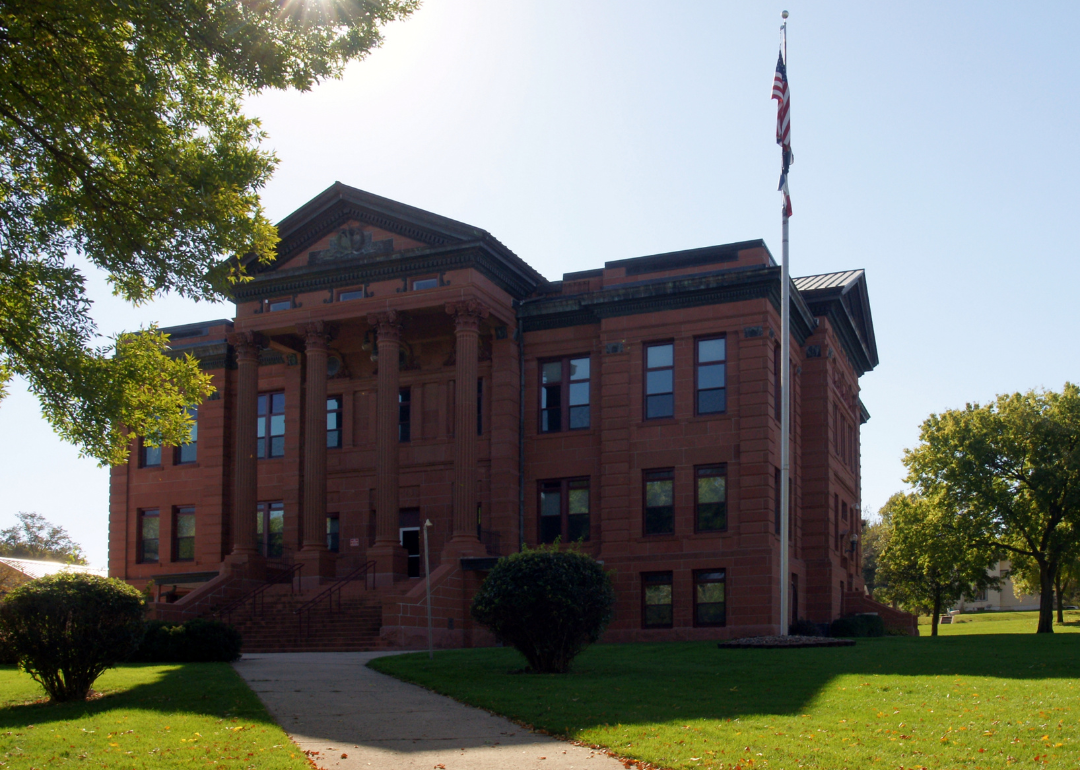
#14. Plymouth County, Iowa
– Overall Rank: 668
– Population: 25,621
– Median household income: $79,963
– Median home value: $199,800 (75% own)
– Median rent: $816 (25% rent)
– Top public schools: Le Mars High School (grade A minus), Hinton Middle School (grade A minus), Franklin Elementary School (grade A minus)
– Top private schools: Gehlen Catholic Schools (grade B+), St. Mary’s High School (grade B), St. Catherine-St. Mary’s Grade School (grade unavailable)
– Top places: Le Mars (grade A minus), Hinton (grade B+), Washington Township (grade B+)
About
Plymouth County is known for its strong agricultural economy, with fertile farmland supporting corn, soybeans, and livestock production. The area features a blend of small towns and rural communities, where local events and traditional values play a significant role in daily life. Its economy also benefits from food processing and manufacturing sectors that support the regional workforce.
In addition to its economic contributions, the county is recognized for its scenic rolling plains and outdoor recreation opportunities, including local parks and trails. Education and community services are supported through small school districts and civic organizations that foster tight-knit relationships. Local culture is often centered around seasonal festivals, county fairs, and historical preservation efforts.
Where is Plymouth County?
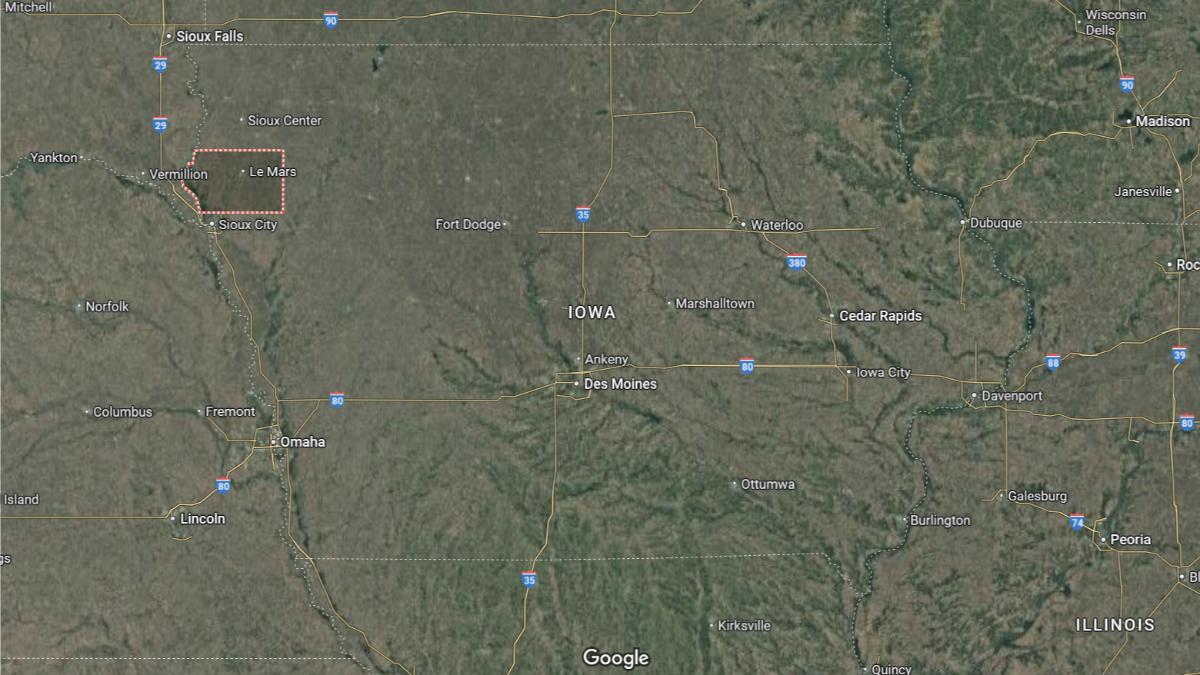
Plymouth County is located in northwestern Iowa, about 25 miles northeast of Sioux City. It lies roughly 160 miles northwest of Des Moines and approximately 80 miles north of Omaha, Nebraska. The county is bordered by the Big Sioux River on the west, near the Iowa-South Dakota border.
The county seat is Le Mars, known as the “Ice Cream Capital of the World” and situated about 30 miles east of the Missouri River. Plymouth County is part of the Siouxland region, which includes parts of Iowa, Nebraska, and South Dakota. U.S. Highway 75 and Iowa Highway 3 run through the county, providing access to regional centers within a 50-mile radius.
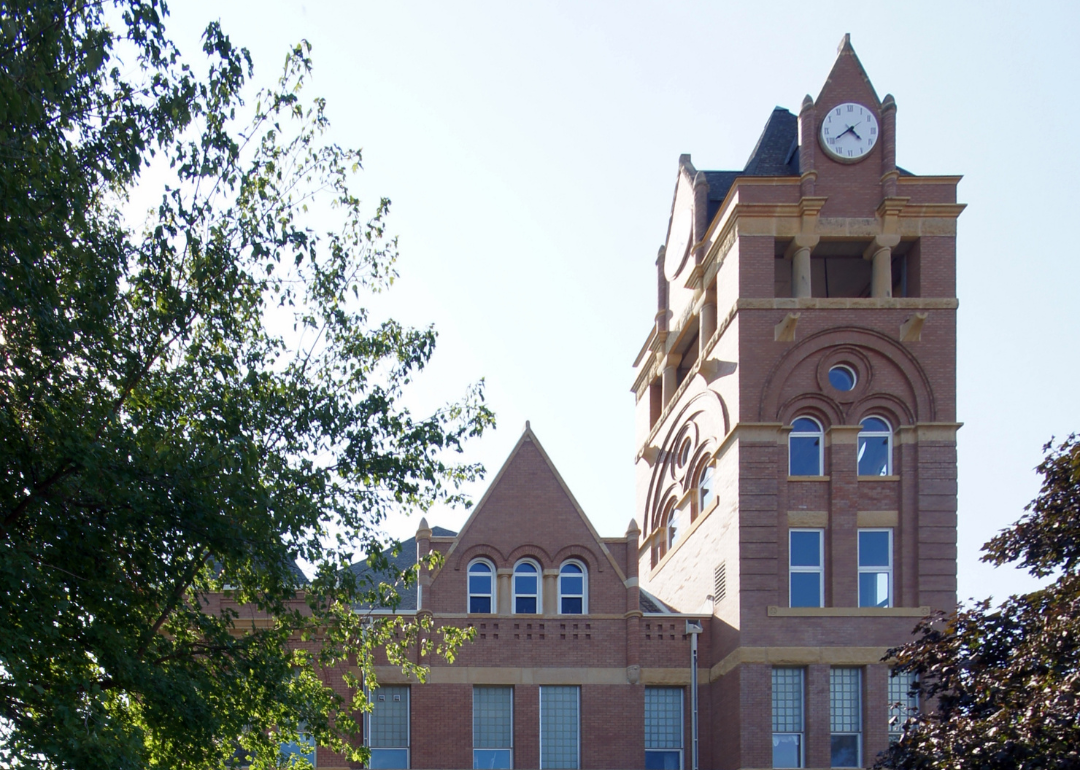
#13. Winnebago County, Iowa
– Overall Rank: 597
– Population: 10,704
– Median household income: $62,853
– Median home value: $121,700 (75% own)
– Median rent: $669 (25% rent)
– Top public schools: Lake Mills Elementary School (grade B+), Forest City Middle School (grade B+), Lake Mills Senior High School (grade B+)
– Top private schools:
– Top places: Logan Township (grade A), Center Township (grade B+), Forest Township (grade B+)
About
Winnebago County has a strong foundation in agriculture, with corn and soybean farming and livestock operations playing a central role in its economy. It also supports light manufacturing and renewable energy sectors, contributing to local job growth and economic diversification. The region values community-driven initiatives and maintains a balanced rural economy.
Cultural life in the county is marked by small-town traditions, local fairs, and historical sites that reflect its heritage. Residents enjoy outdoor recreation through public parks, lakes, and seasonal activities that promote a close connection to the natural environment. Education and public services are anchored by community schools and local government efforts to support resident well-being.
Where is Winnebago County?
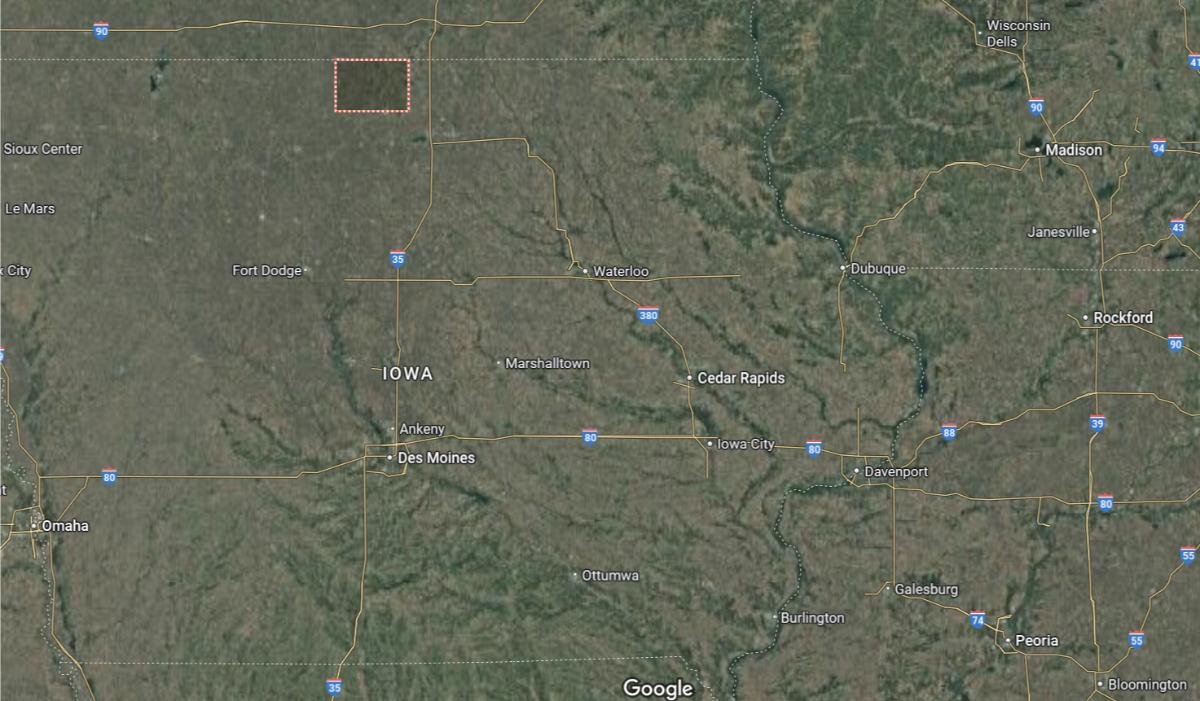
Winnebago County is situated in north-central Iowa, directly along the Minnesota border. It is about 120 miles north of Des Moines and approximately 30 miles north of Mason City. The county seat, Forest City, lies around 95 miles south of Minneapolis.
The county is roughly 70 miles west of the Mississippi River and about 140 miles east of Sioux Falls, South Dakota. Major routes like U.S. Highway 69 and Iowa Highway 9 cross through the area, connecting it to nearby towns and cities. Winnebago County is part of a rural region known for its agriculture and proximity to Iowa’s northern lakes.

#12. Woodbury County, Iowa
– Overall Rank: 589
– Population: 105,526
– Median household income: $68,399
– Median home value: $158,000 (68% own)
– Median rent: $913 (32% rent)
– Top public schools: Bronson Elementary School (grade A), Sergeant Bluff-Luton Middle School (grade A), Clark Early Childhood Center (grade A minus)
– Top private schools: Bishop Heelan Catholic High School (grade A), Siouxland Community Christian School (grade B), Mater Dei School (grade unavailable)
– Top places: Sergeant Bluff (grade A minus), Sioux City (grade B), Woodbury Township (grade A minus)
About
Woodbury County features a diverse economy supported by agriculture, manufacturing, healthcare, and transportation industries. It serves as a regional hub for commerce and services, with a blend of urban and rural characteristics that support both economic development and community living. The area fosters growth through infrastructure, education, and workforce initiatives.
The county offers a rich cultural scene with museums, performing arts venues, and annual festivals celebrating local heritage and creativity. Recreational opportunities include riverfront trails, parks, and outdoor sports, encouraging active lifestyles. Community pride is reflected in ongoing revitalization projects and strong civic engagement.
Where is Woodbury County?
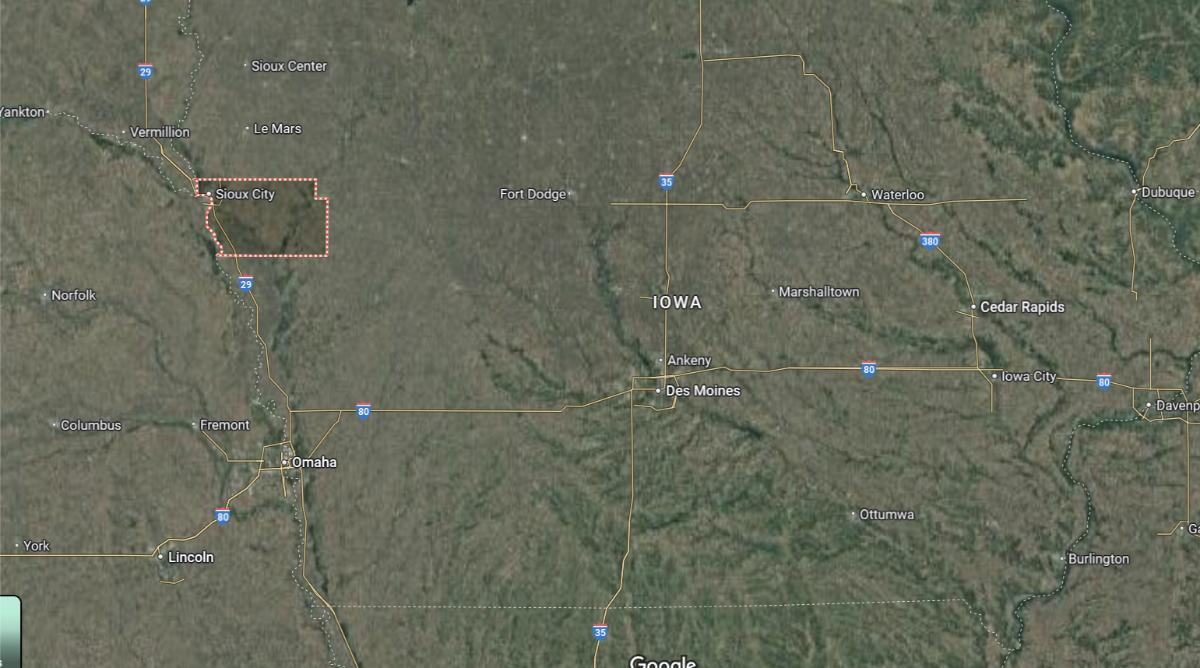
Woodbury County is located in the western part of Iowa, along the Missouri River. It is about 190 miles northwest of Des Moines and roughly 100 miles north of Omaha, Nebraska. The county seat, Sioux City, is situated approximately 85 miles south of Sioux Falls, South Dakota.
Woodbury County borders Nebraska and South Dakota, forming part of the tri-state Siouxland region. It lies around 55 miles west of Storm Lake and about 35 miles southwest of Le Mars. Major highways like I-29 and U.S. 20 run through the county, linking it to regional transportation routes.
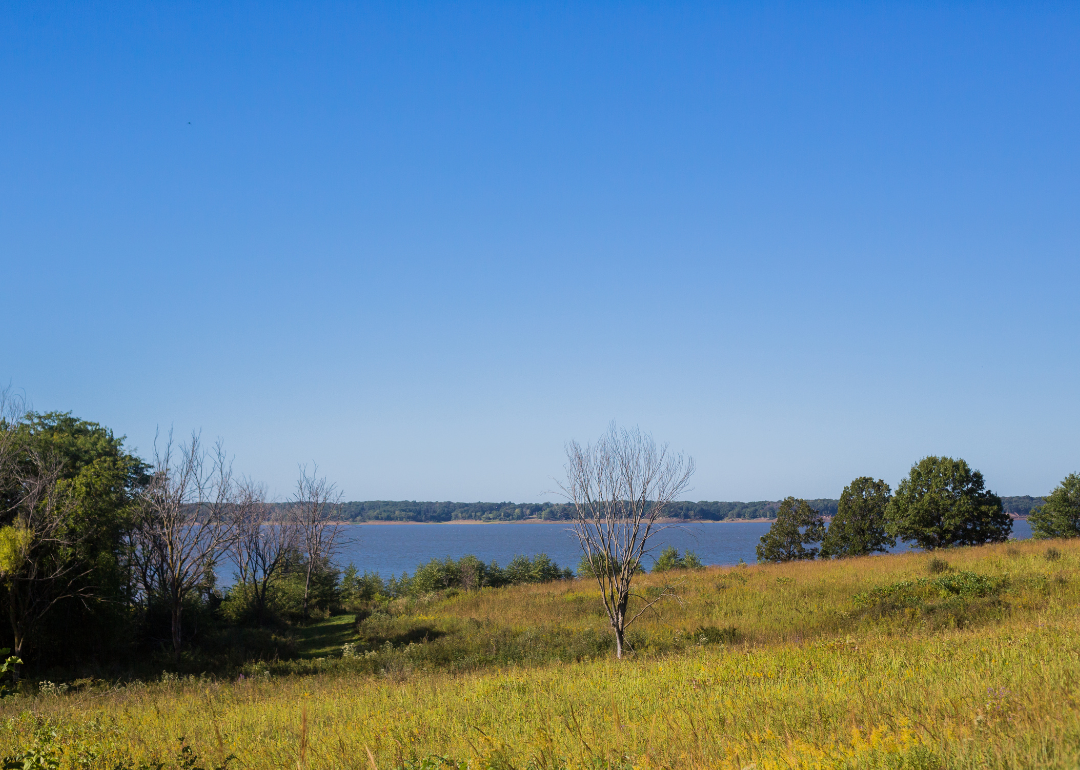
#11. Marion County, Iowa
– Overall Rank: 583
– Population: 33,487
– Median household income: $74,193
– Median home value: $192,300 (77% own)
– Median rent: $845 (23% rent)
– Top public schools: Pella Middle School (grade A minus), Pella High School (grade A minus), Jefferson Intermediate School (grade A minus)
– Top private schools: Pella Christian High School (grade B), Pella Christian Grade School (grade unavailable), Peoria Christian School (grade unavailable)
– Top places: Pella (grade A), Knoxville (grade B minus), Lake Prairie Township (grade A)
About
Marion County has a well-rounded economy rooted in manufacturing, agriculture, and tourism, with several locally based companies contributing to regional stability. The area supports innovation through strong community planning and collaboration between business, education, and government sectors. Local industries benefit from a skilled workforce and access to regional transportation networks.
Civic life is enriched by cultural festivals, historic landmarks, and recreational spaces that foster a strong sense of community. Residents enjoy outdoor activities like boating, hiking, and camping, supported by well-maintained parks and natural areas. Education, healthcare, and public services play a vital role in maintaining a high quality of life.
Where is Marion County?
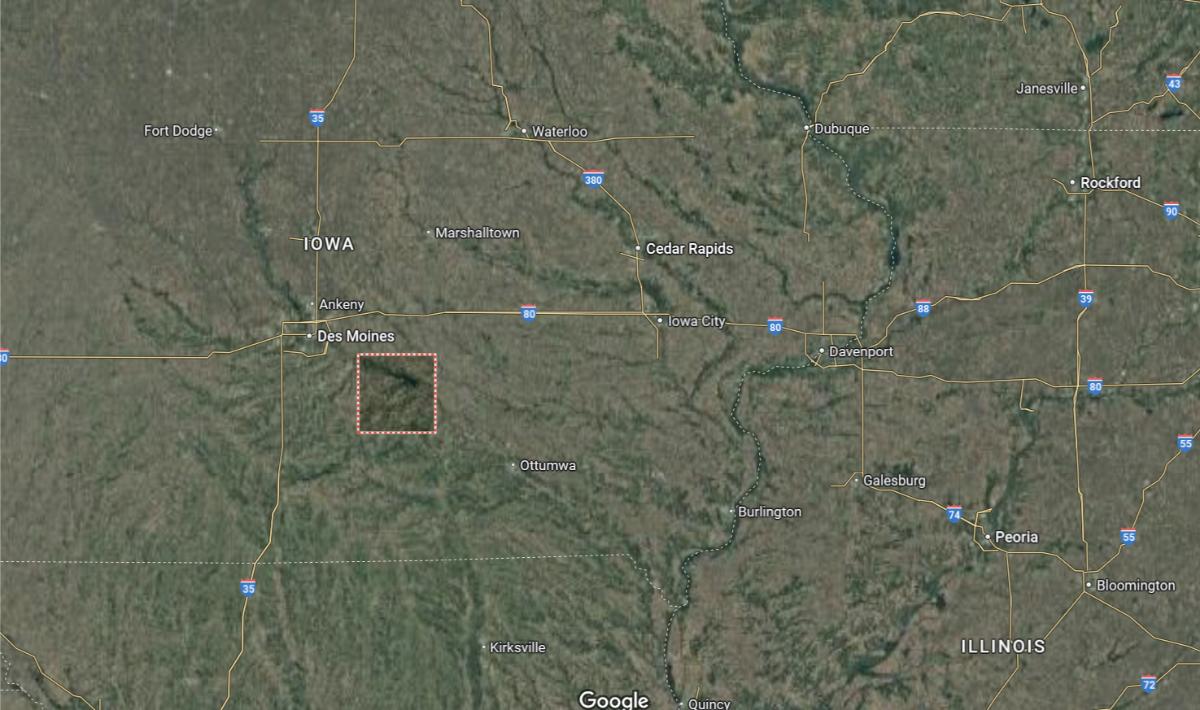
Marion County is located in south-central Iowa, about 40 miles southeast of Des Moines. The county seat, Knoxville, sits roughly 90 miles northeast of the Missouri border. It is approximately 65 miles west of the Mississippi River.
The county is around 55 miles south of Marshalltown and about 80 miles east of Winterset. Pella, another major city in the county, is located 25 miles east of Indianola. Marion County is intersected by Iowa Highways 5 and 92, offering direct routes to nearby regions.
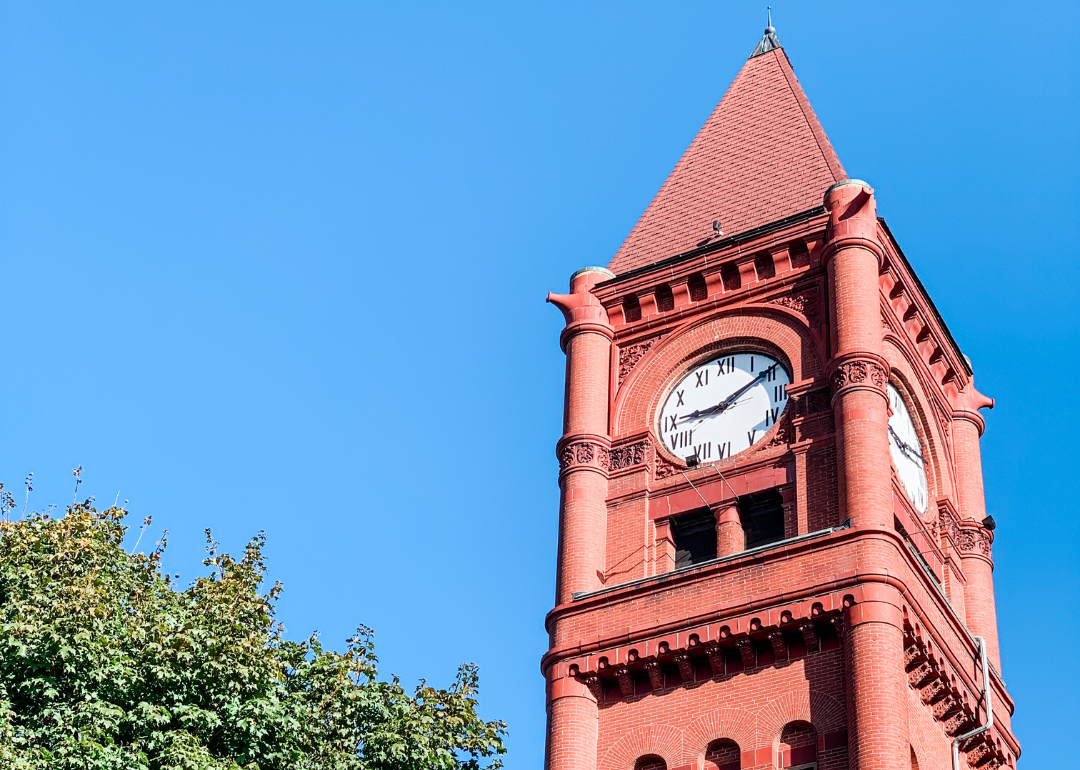
#10. Jefferson County, Iowa
– Overall Rank: 451
– Population: 15,785
– Median household income: $52,210
– Median home value: $141,500 (65% own)
– Median rent: $838 (35% rent)
– Top public schools: Pekin Elementary School (grade B+), Washington Elementary School (grade B), Pekin Community High School (grade B minus)
– Top private schools: Maharishi School (grade A+)
– Top places: Fairfield (grade A minus), Maharishi Vedic City (grade B+), Center Township (grade B)
About
Jefferson County supports a diverse local economy that blends agriculture, manufacturing, small business, and tourism. Its creative and entrepreneurial spirit is reflected in community initiatives and a strong emphasis on wellness, sustainability, and cultural exchange. Local businesses benefit from a supportive environment that encourages innovation and growth.
The county is known for its vibrant arts scene, historic architecture, and a strong commitment to environmental stewardship. Residents and visitors enjoy parks, trails, and events that promote outdoor living and cultural enrichment. Education, holistic health services, and civic engagement are central to the community’s identity.
Where is Jefferson County?
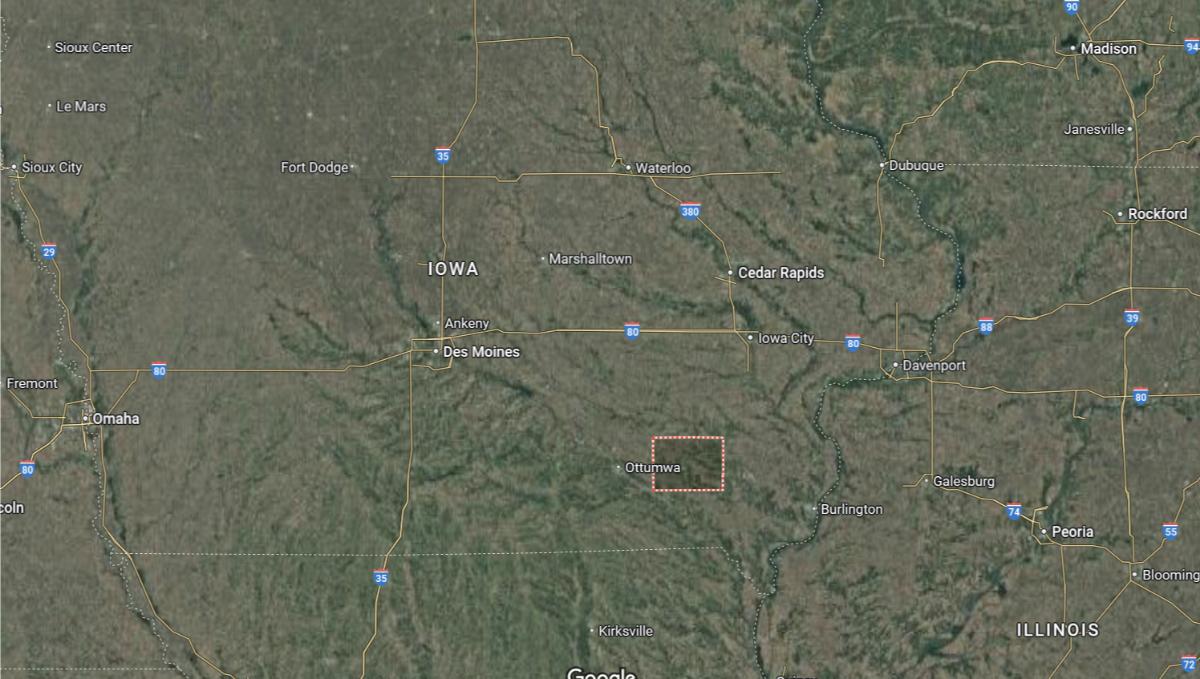
Jefferson County is located in southeastern Iowa, about 90 miles southeast of Des Moines. The county seat, Fairfield, is roughly 30 miles west of the Mississippi River. It lies approximately 75 miles northwest of Burlington.
The county is about 60 miles south of Iowa City and around 50 miles northeast of Ottumwa. Fairfield is also situated roughly 35 miles east of Albia. U.S. Highway 34 runs through the county, providing a direct east-west route across the region.
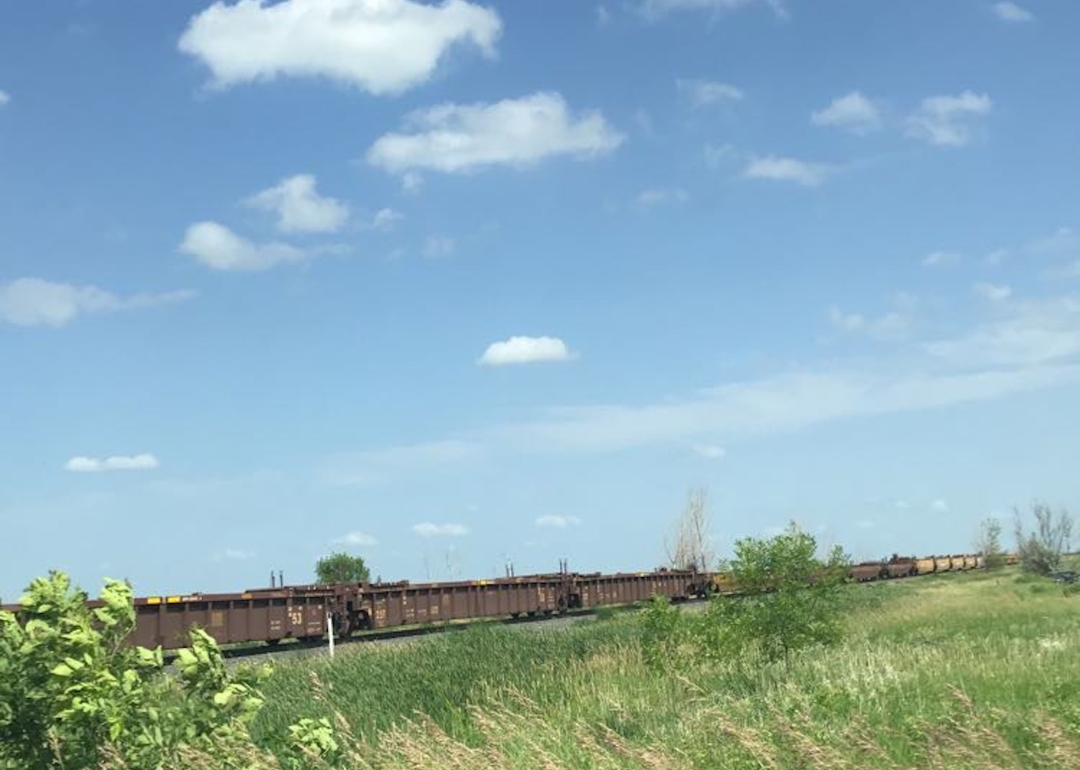
#9. Bremer County, Iowa
– Overall Rank: 337
– Population: 25,012
– Median household income: $84,727
– Median home value: $202,600 (84% own)
– Median rent: $783 (16% rent)
– Top public schools: Denver Middle School (grade A), Denver Elementary School (grade A), Southeast Elementary School (grade A minus)
– Top private schools: St. Paul’s Lutheran School (grade unavailable), Community Lutheran School (grade unavailable)
– Top places: Waverly (grade A), Jefferson Township (grade A), Washington Township (grade A)
About
Bremer County features a balanced economy that includes agriculture, education, healthcare, and manufacturing, offering a stable foundation for community growth. Its mix of rural landscapes and growing towns supports both traditional industries and modern development. Local investment in infrastructure and education continues to strengthen regional prosperity.
Cultural life is centered around community festivals, local arts, and recreational activities that highlight the county’s welcoming character. Parks, trails, and public spaces provide opportunities for outdoor enjoyment and family-oriented events. Strong schools, civic organizations, and public services contribute to a high quality of life for residents.
Where is Bremer County?
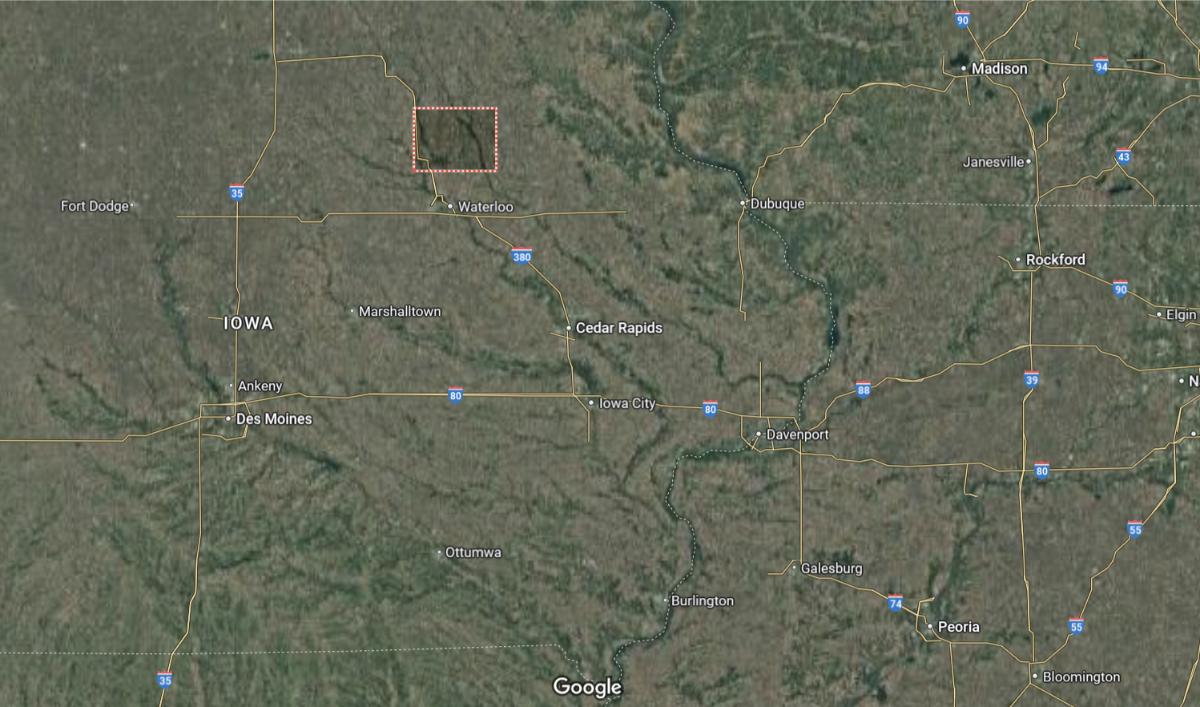
Bremer County is located in northeastern Iowa, about 95 miles northeast of Des Moines. The county seat, Waverly, lies roughly 20 miles north of Waterloo. It is situated approximately 75 miles west of the Mississippi River.
The county is around 55 miles south of the Minnesota border and about 60 miles northwest of Dubuque. Waverly is approximately 45 miles northeast of Marshalltown. Iowa Highway 3 and U.S. Highway 218 pass through the county, connecting it to regional cities.
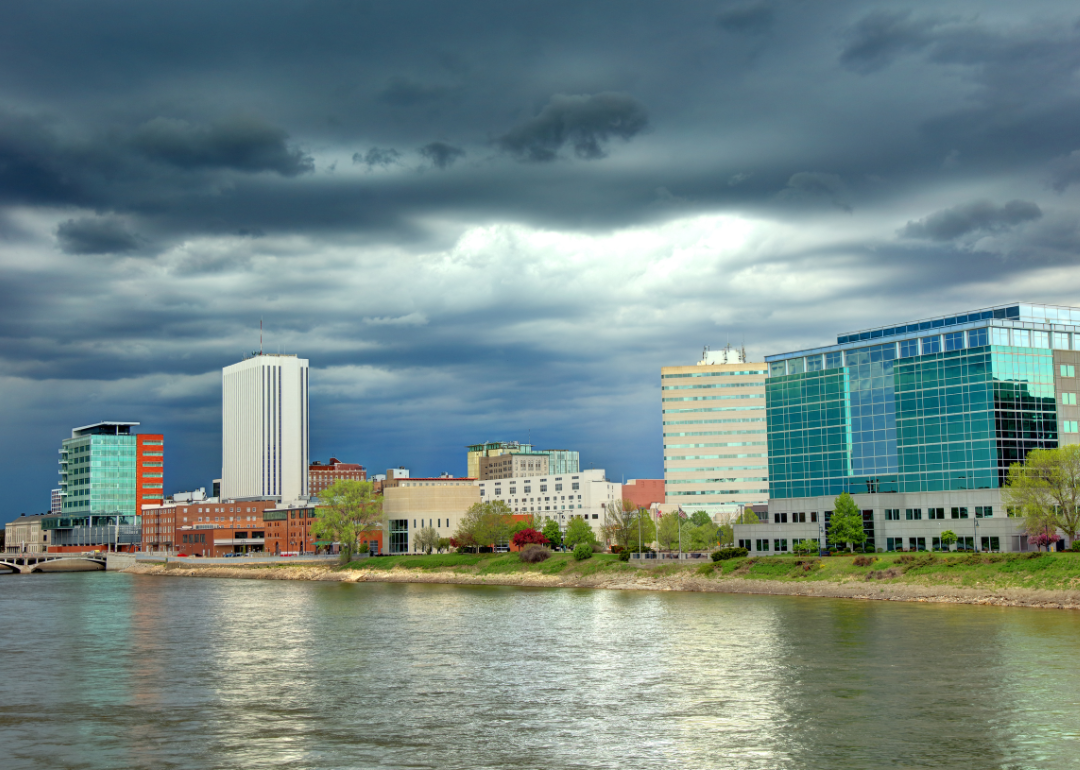
#8. Linn County, Iowa
– Overall Rank: 258
– Population: 229,308
– Median household income: $75,457
– Median home value: $188,800 (74% own)
– Median rent: $878 (26% rent)
– Top public schools: Indian Creek Elementary School (grade A), Westfield Elementary School (grade A), Linn-Mar High School (grade A)
– Top private schools: Xavier High School (grade A minus), Cedar Valley Christian School (grade B minus), Isaac Newton Christian Academy (grade B minus)
– Top places: Mount Vernon (grade A), Marion (grade A), Hiawatha (grade A minus)
About
Linn County boasts a dynamic economy anchored by manufacturing, technology, healthcare, and financial services, creating a robust employment base. It supports regional innovation through public-private partnerships, infrastructure investment, and workforce development. The area’s diverse industries are complemented by a strong entrepreneurial ecosystem and higher education institutions.
Cultural amenities include museums, theaters, music festivals, and a thriving food scene that reflect the county’s vibrant community life. Residents enjoy expansive park systems, trail networks, and recreational programs that encourage year-round outdoor activities. Civic pride and ongoing revitalization efforts contribute to a progressive and inclusive atmosphere.
Where is Linn County?
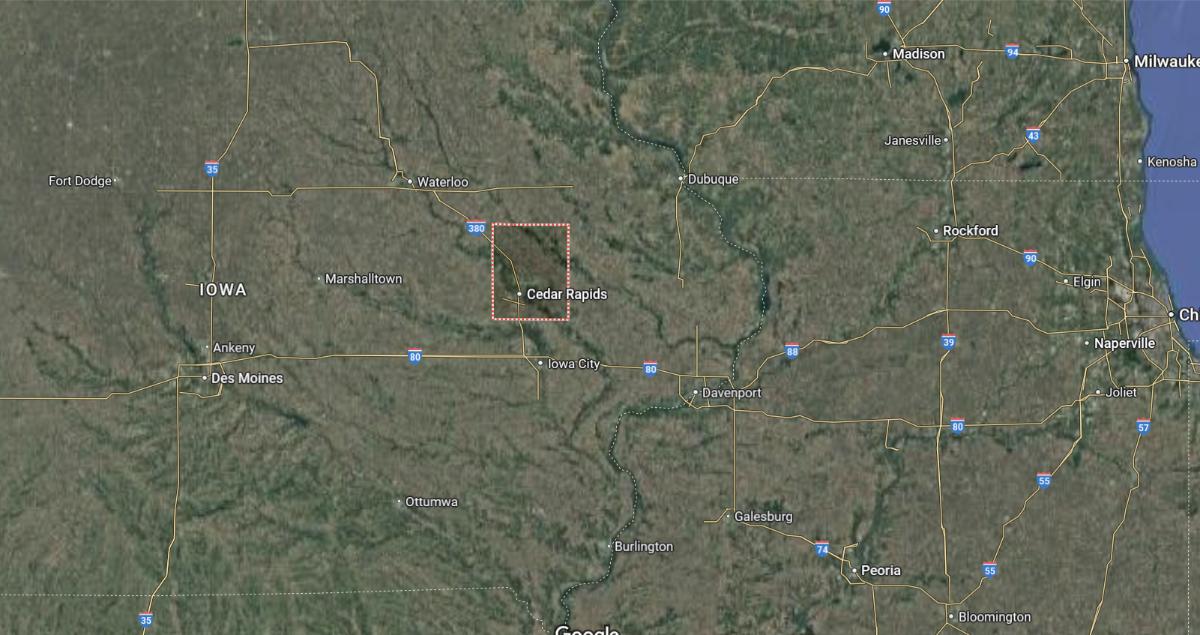
Linn County is located in eastern Iowa, about 110 miles east of Des Moines. The county seat, Cedar Rapids, lies roughly 25 miles north of Iowa City. It is situated approximately 50 miles west of the Mississippi River.
The county is around 90 miles southwest of Dubuque and about 65 miles northwest of the Quad Cities. Cedar Rapids is located about 60 miles south of Waterloo. Major highways like I-380 and U.S. Highway 30 run through the county, offering strong regional connectivity.
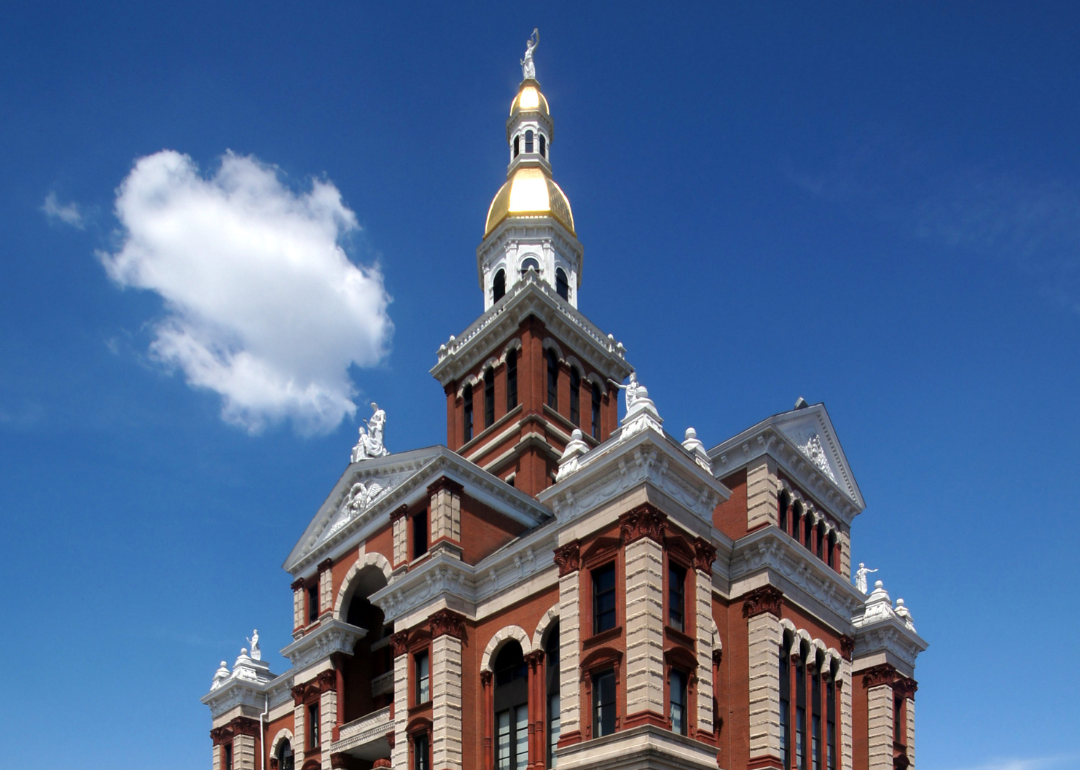
#7. Dubuque County, Iowa
– Overall Rank: 237
– Population: 98,812
– Median household income: $73,495
– Median home value: $210,300 (73% own)
– Median rent: $912 (27% rent)
– Top public schools: Cascade Elementary School (grade A), Peosta Elementary School (grade A), Epworth Elementary School (grade A minus)
– Top private schools: Wahlert Catholic High School (grade B+), Beckman Catholic School (grade B), St. Francis Xavier Elementary School (grade A)
– Top places: Asbury (grade A), Dubuque (grade A minus), Dyersville (grade B+)
About
Dubuque County features a diversified economy supported by manufacturing, finance, education, healthcare, and tourism. Economic growth is driven by sustainable development, innovation hubs, and investments in infrastructure and job training. The county maintains a balance between economic vitality and environmental stewardship.
Cultural richness is expressed through public art, historic districts, performing arts venues, and annual community events. Residents benefit from an extensive parks system, riverfront attractions, and outdoor recreational opportunities. Strong public services, educational institutions, and civic engagement create a well-rounded quality of life.
Where is Dubuque County?
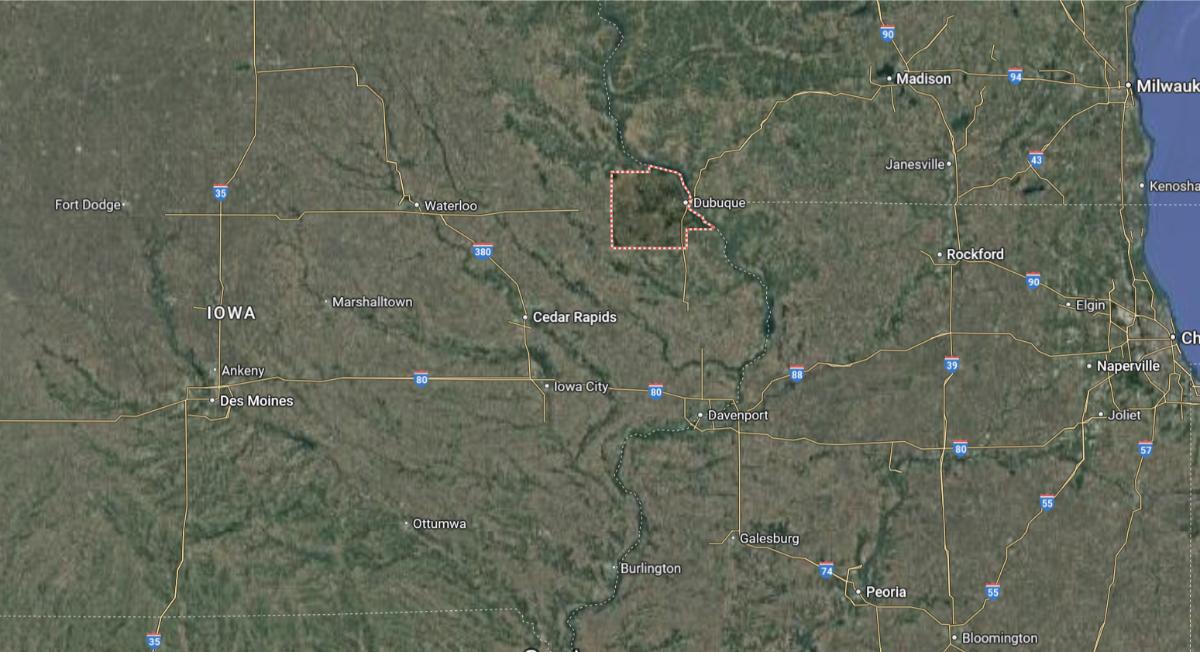
Dubuque County is located in the northeastern corner of Iowa, along the Mississippi River. The county seat, Dubuque, is about 190 miles northeast of Des Moines. It lies approximately 75 miles east of Waterloo.
The county is roughly 90 miles north of the Quad Cities and about 15 miles west of the Illinois border. Dubuque is also around 25 miles south of the Minnesota border. U.S. Highways 20 and 61 run through the area, providing access to nearby cities and states.
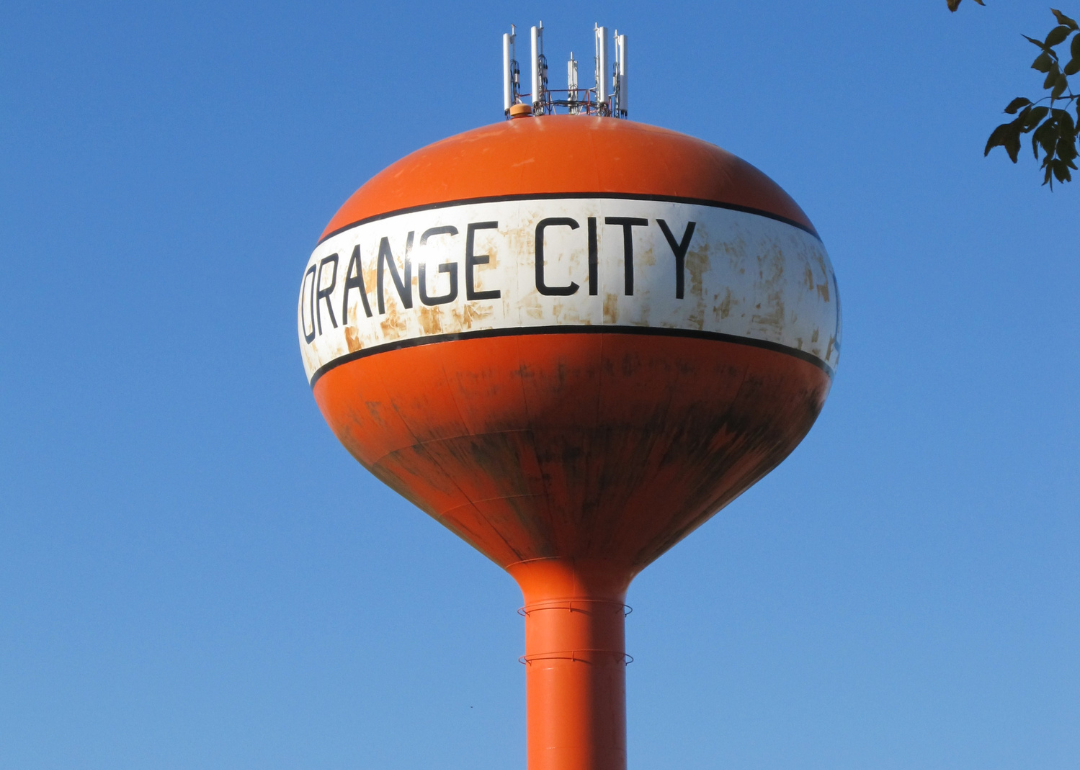
#6. Sioux County, Iowa
– Overall Rank: 203
– Population: 35,815
– Median household income: $81,914
– Median home value: $220,700 (79% own)
– Median rent: $795 (21% rent)
– Top public schools: Hospers Elementary School (grade A+), Orange City Elementary School (grade A), MOC-Floyd Valley Middle School (grade A)
– Top private schools: Western Christian High School (grade B+), Unity Christian High School (grade B+), Netherlands Reformed Christian School (grade C minus)
– Top places: Orange City (grade A+), Sioux Center (grade A), Alton (grade A minus)
About
Sioux County is grounded in a strong agricultural economy, particularly known for its livestock, dairy, and crop production. The county also supports manufacturing, construction, and education sectors, contributing to a resilient and diversified local economy. Community development is driven by collaborative efforts between residents, businesses, and institutions.
Cultural life is shaped by heritage festivals, faith-based organizations, and vibrant local traditions that foster strong community bonds. Parks, recreational facilities, and civic centers offer spaces for sports, gatherings, and year-round activities. High-quality schools, healthcare access, and a focus on family values make it a desirable place to live and work.
Where is Sioux County?
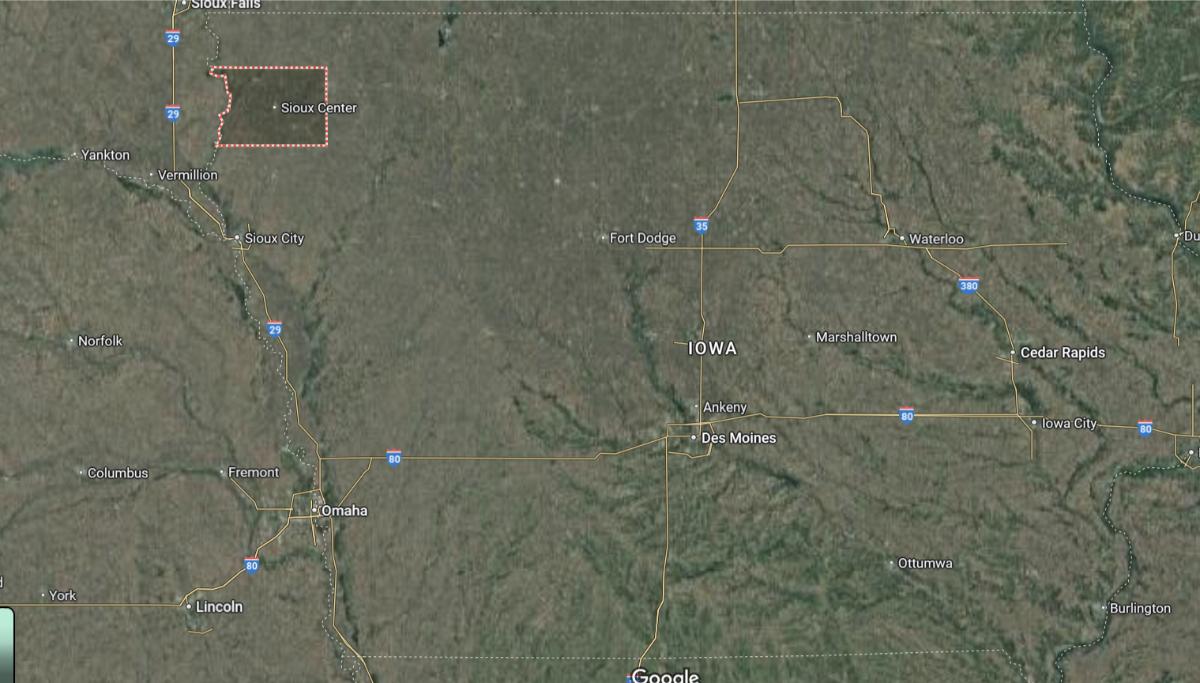
Sioux County is located in the northwestern corner of Iowa, near the South Dakota and Minnesota borders. The county seat, Orange City, is about 45 miles northeast of Sioux City. It lies approximately 160 miles northwest of Des Moines.
The county is around 50 miles southeast of Sioux Falls, South Dakota, and about 85 miles north of Omaha, Nebraska. Orange City is situated roughly 30 miles west of Spencer. U.S. Highway 75 and Iowa Highway 60 provide key north-south and east-west routes through the area.
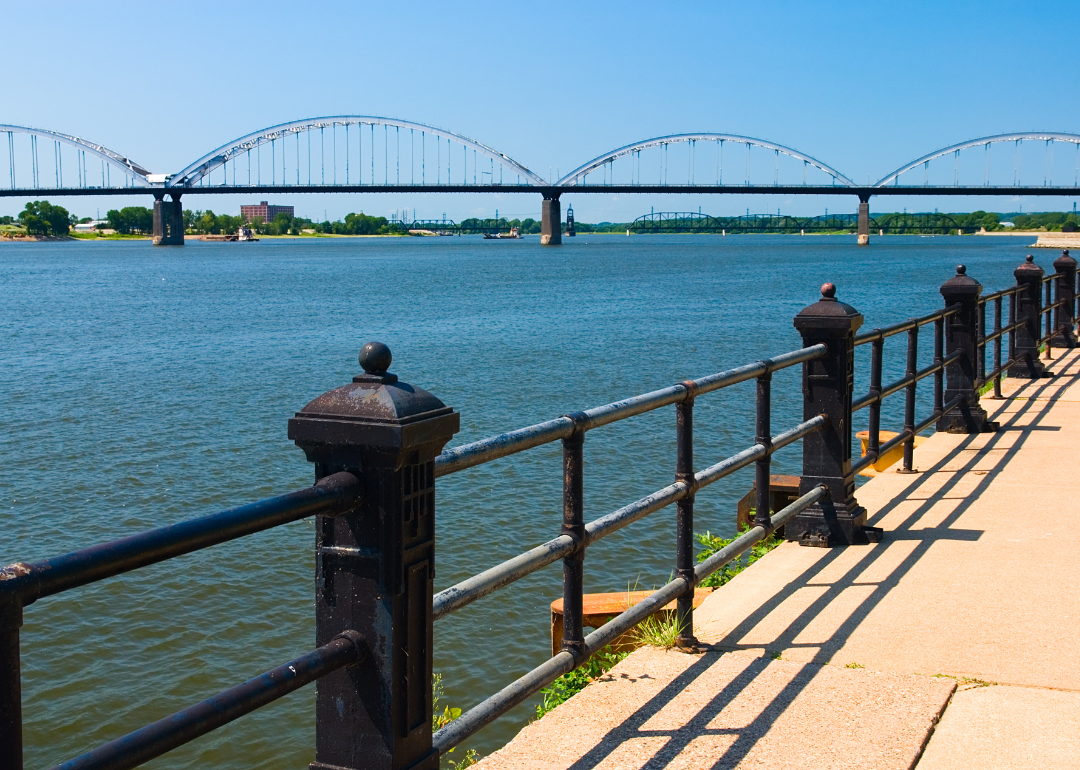
#5. Scott County, Iowa
– Overall Rank: 192
– Population: 174,315
– Median household income: $72,792
– Median home value: $198,000 (69% own)
– Median rent: $919 (31% rent)
– Top public schools: Hopewell Elementary (grade A+), Pleasant View Elementary (grade A+), Pleasant Valley Junior High School (grade A+)
– Top private schools: Rivermont Collegiate (grade A+), Assumption High School (grade A minus), Morning Star Academy (grade B+)
– Top places: Bettendorf (grade A+), Eldridge (grade A), Le Claire (grade A)
About
Scott County supports a thriving economy driven by manufacturing, logistics, healthcare, education, and retail industries. Strategic investment in infrastructure and workforce training has positioned the county as a regional hub for innovation and commerce. The local economy benefits from a blend of urban energy and community-focused development.
Arts, culture, and recreation are central to daily life, with museums, theaters, music venues, and public events enriching the community. Residents enjoy an extensive park system, riverfront amenities, and vibrant neighborhoods that promote engagement and wellness. Strong schools, public services, and civic pride contribute to a high standard of living.
Where is Scott County?
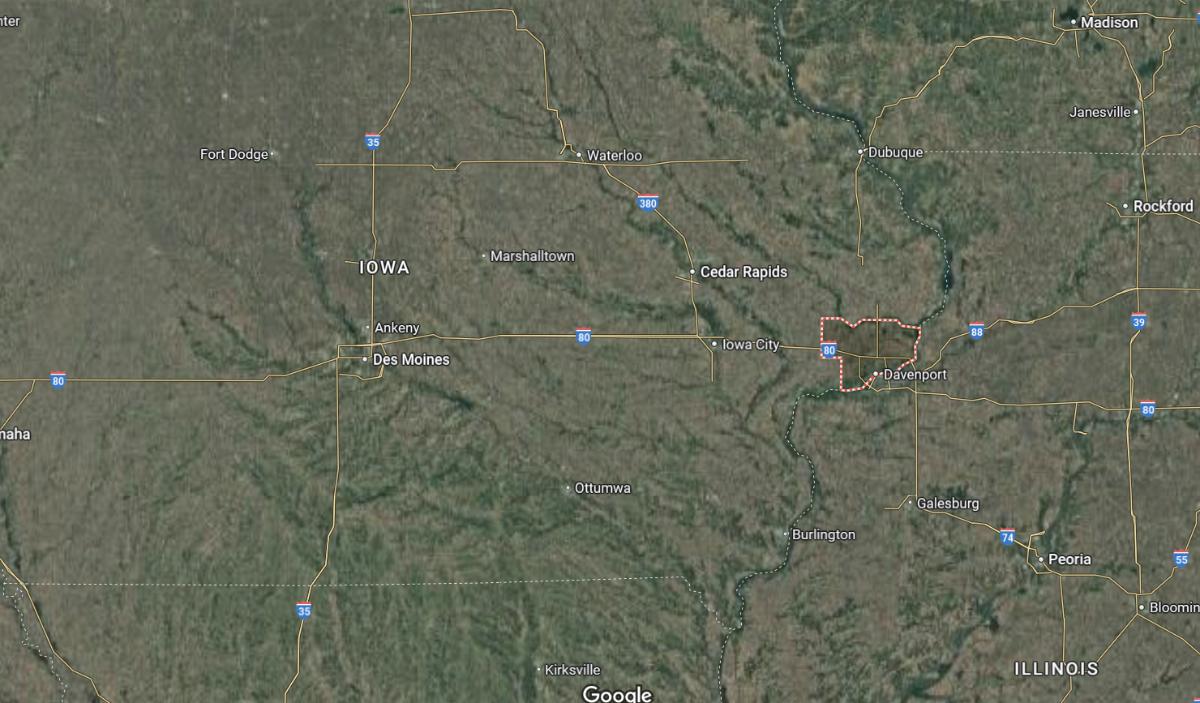
Scott County is located in eastern Iowa along the Mississippi River, directly across from Illinois. The county seat, Davenport, is about 160 miles east of Des Moines. It lies roughly 55 miles southeast of Cedar Rapids.
The county is around 80 miles north of Burlington and about 90 miles southwest of Dubuque. Davenport is approximately 60 miles east of Iowa City. Interstate 80 and U.S. Highway 61 run through the county, connecting it to major regional hubs.

#4. Polk County, Iowa
– Overall Rank: 143
– Population: 493,378
– Median household income: $78,827
– Median home value: $232,000 (67% own)
– Median rent: $1,060 (33% rent)
– Top public schools: Prairie Trail Elementary School (grade A), Northeast Elementary School (grade A), Valley High School (grade A)
– Top private schools: Dowling Catholic High School (grade A), Grand View Christian School (grade A minus), Des Moines Christian School (grade B+)
– Top places: West Des Moines (grade A+), Waterbury (grade A+), Urbandale (grade A+)
About
Polk County has a dynamic and diverse economy anchored by finance, insurance, healthcare, government, and technology sectors. It serves as a major employment and innovation center, with strong infrastructure and a focus on sustainable urban development. Investment in education and public transit continues to support long-term regional growth.
Cultural offerings include a wide range of museums, performing arts venues, sports events, and festivals that reflect a vibrant and inclusive community. Parks, trails, and recreational facilities provide abundant opportunities for outdoor activities and wellness. Community engagement, high-quality services, and strong leadership contribute to a progressive and connected living environment.
Where is Polk County?
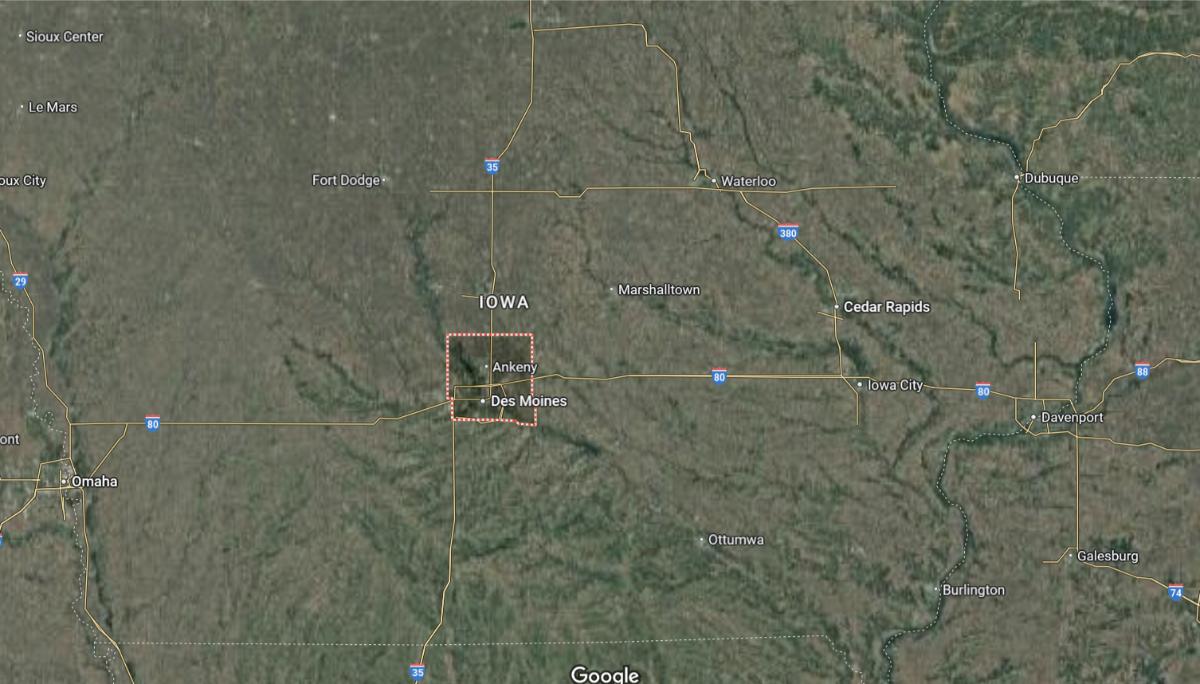
Polk County is located in central Iowa and is home to the state capital, Des Moines. It lies about 115 miles southwest of Cedar Rapids and roughly 90 miles northwest of Iowa City. The county is approximately 160 miles west of the Mississippi River.
Des Moines is situated around 45 miles east of Winterset and about 50 miles south of Ames. The county is also roughly 135 miles southeast of Sioux City. Interstates 35 and 80 intersect in Polk County, making it a central transportation hub in Iowa.
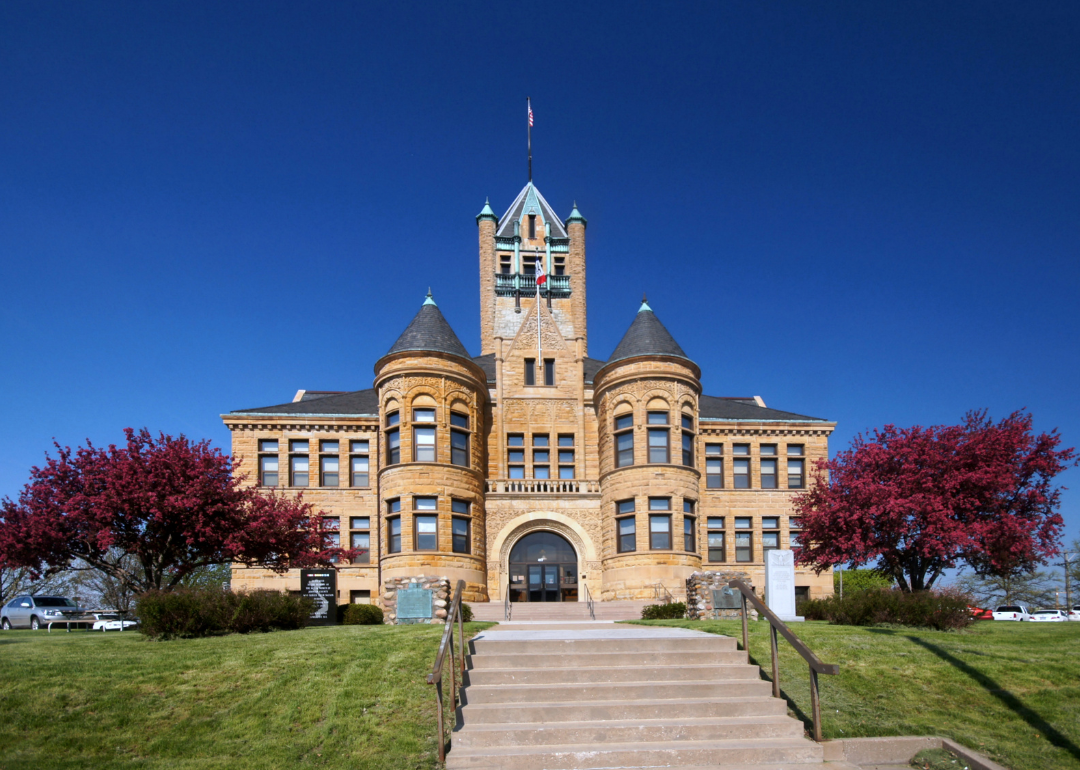
#3. Johnson County, Iowa
– Overall Rank: 68
– Population: 153,360
– Median household income: $72,977
– Median home value: $277,800 (59% own)
– Median rent: $1,086 (41% rent)
– Top public schools: West Senior High School (grade A+), Wickham Elementary School (grade A), Lincoln Elementary School (grade A)
– Top private schools: Regina Catholic Education Center (grade A), Hillcrest Academy (grade A minus), Regina Catholic Elementary School (grade unavailable)
– Top places: University Heights (grade A+), Coralville (grade A+), North Liberty (grade A+)
About
Johnson County thrives on a knowledge-based economy supported by higher education, healthcare, research, and technology sectors. Innovation and academic excellence fuel local growth, attracting talent and fostering entrepreneurship. The county benefits from a skilled workforce, modern infrastructure, and a strong commitment to public investment.
Cultural life is enriched by diverse arts, music, and literary scenes, along with vibrant community festivals and events. Parks, trails, and public spaces promote active lifestyles and environmental appreciation. Inclusive values, civic participation, and quality public services make it a forward-thinking and livable community.
Where is Johnson County?
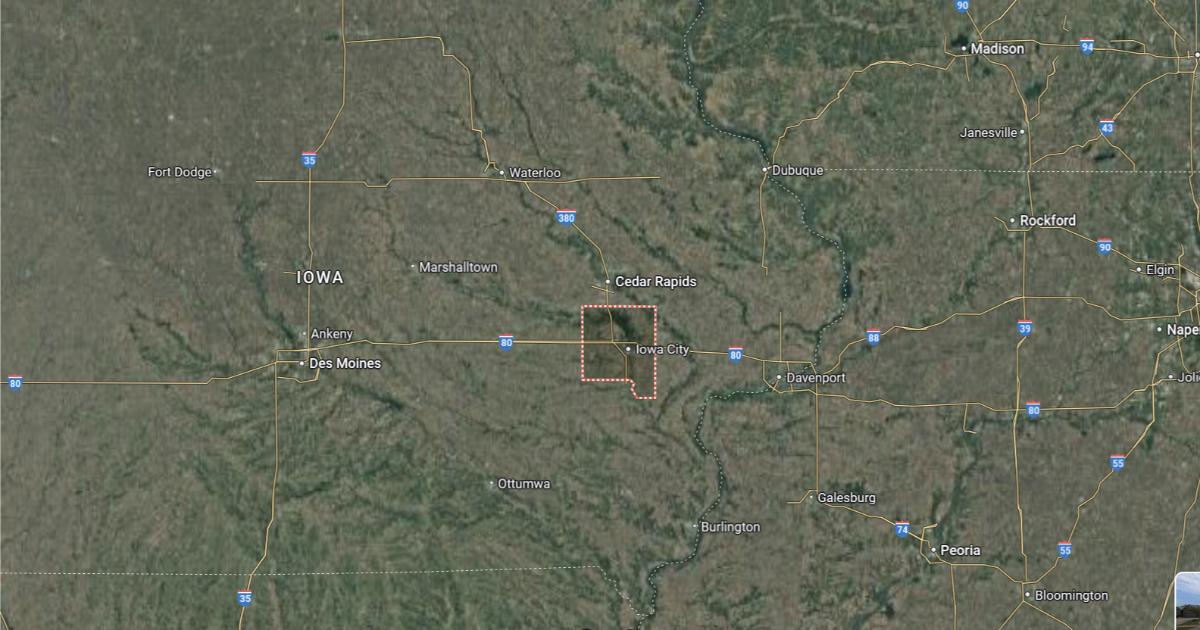
Johnson County is located in eastern Iowa, about 110 miles east of Des Moines. The county seat, Iowa City, is approximately 25 miles south of Cedar Rapids. It lies around 60 miles west of the Mississippi River.
The county is roughly 90 miles northwest of the Quad Cities and about 85 miles south of Dubuque. Iowa City is situated around 35 miles east of Williamsburg. Interstate 80 and U.S. Highway 218 run through Johnson County, providing key regional connections.
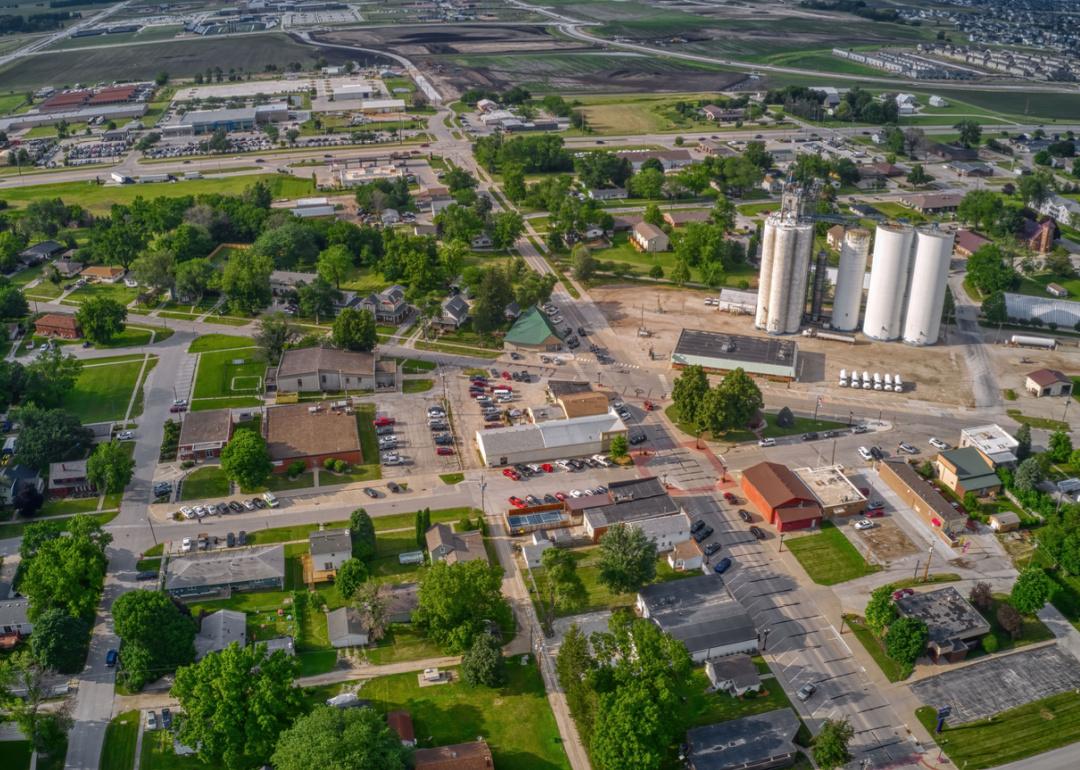
#2. Dallas County, Iowa
– Overall Rank: 67
– Population: 100,367
– Median household income: $99,533
– Median home value: $314,900 (70% own)
– Median rent: $1,198 (30% rent)
– Top public schools: Waukee Senior High School (grade A), Walnut Hills Elementary School (grade A), Eason Elementary School (grade A)
– Top private schools: St. Francis of Assisi School (grade unavailable), St. Patrick’s Catholic School (grade unavailable), Dallas Center Christian School (grade unavailable)
– Top places: Waukee (grade A+), Clive (grade A+), Adel (grade A minus)
About
Dallas County is one of the fastest-growing regions, with a strong economy supported by construction, retail, professional services, and education. Development is driven by suburban expansion, infrastructure investment, and strategic planning that balances growth with quality of life. A rising population brings increased opportunities for business and community engagement.
The county offers a blend of rural charm and modern amenities, with parks, trails, and recreational programs serving residents of all ages. Cultural events, farmers markets, and civic gatherings help foster a sense of connection and community pride. Schools, libraries, and public safety services play a key role in supporting a high standard of living.
Where is Dallas County?
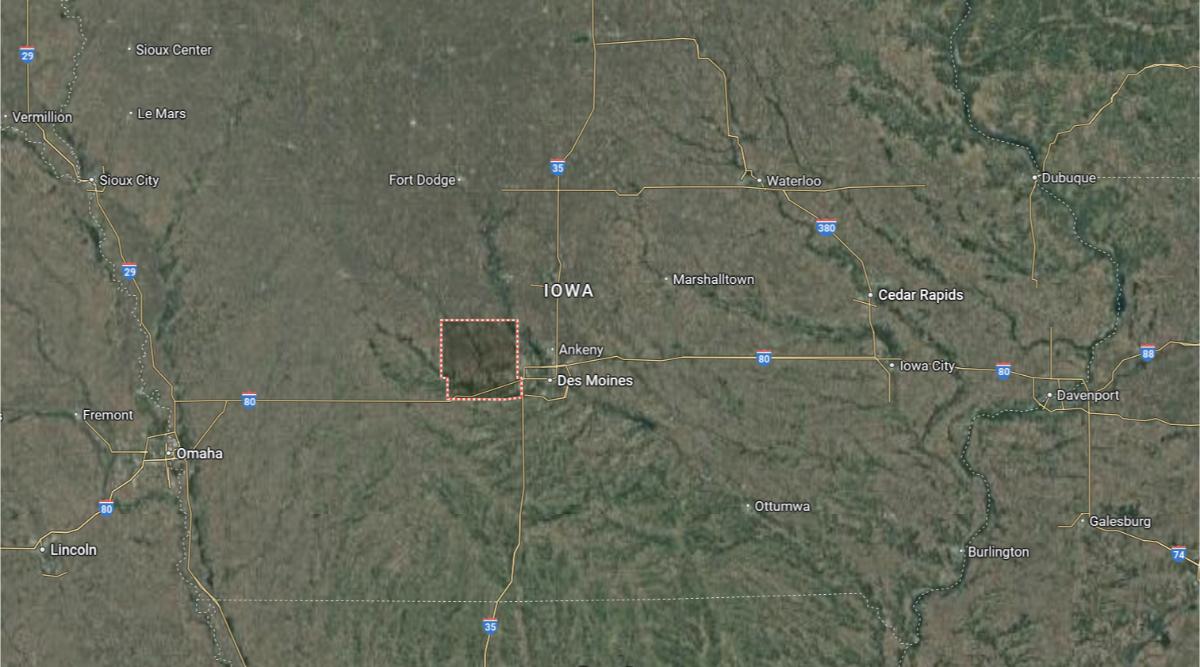
Dallas County is located in central Iowa, just west of Des Moines. The county seat, Adel, is about 25 miles west of downtown Des Moines. It lies approximately 140 miles southwest of Cedar Rapids.
The county is around 90 miles northeast of Omaha, Nebraska, and about 45 miles southeast of Jefferson. Adel is situated roughly 40 miles south of Ames. U.S. Highway 6 and Iowa Highway 44 cross through the area, providing access to major routes like Interstate 80.

#1. Story County, Iowa
– Overall Rank: 65
– Population: 98,573
– Median household income: $66,197
– Median home value: $229,100 (56% own)
– Median rent: $991 (44% rent)
– Top public schools: Gilbert Elementary School (grade A), Gilbert Middle School (grade A), Gilbert Intermediate School (grade A)
– Top private schools: St. Cecilia Elementary School (grade unavailable), Ames Christian School (grade unavailable), Nevada Seventh-day Adventist School (grade unavailable)
– Top places: Ames (grade A), Huxley (grade A), Gilbert (grade A)
About
Story County has a diverse and knowledge-driven economy centered around education, research, agriculture, and advanced manufacturing. Strong university influence fuels innovation, startup growth, and workforce development across a range of industries. Public-private collaboration enhances infrastructure, sustainability, and economic resilience.
Community life is enriched by a vibrant arts scene, science and cultural institutions, and year-round festivals. Extensive parks, green spaces, and recreational programs support wellness and outdoor activity. A commitment to education, civic engagement, and inclusive services makes the county a dynamic and welcoming place to live.
Where is Story County?
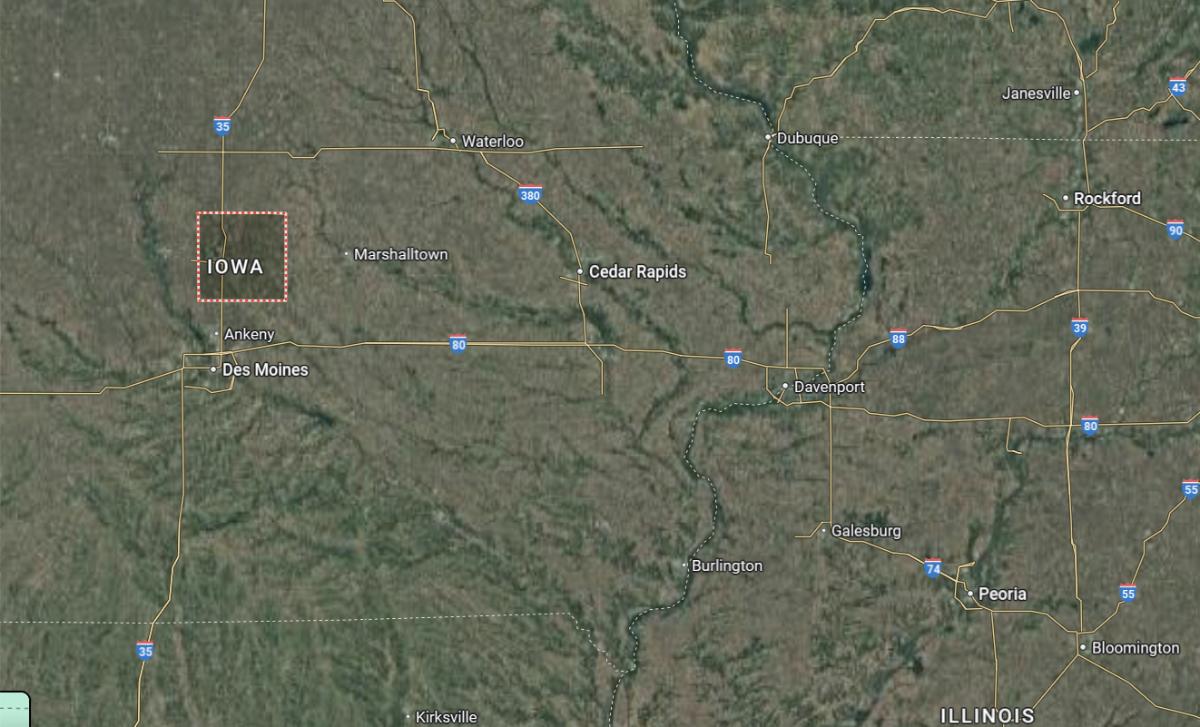
Story County is located in central Iowa, about 35 miles north of Des Moines. The county seat, Nevada, is roughly 10 miles east of Ames, home to Iowa State University. It lies approximately 110 miles west of the Mississippi River.
The county is around 55 miles south of Mason City and about 50 miles northeast of Winterset. Nevada is situated roughly 75 miles southwest of Waterloo. U.S. Highway 30 and Interstate 35 provide direct access through the county to regional cities.
This story features data reporting and writing by Elena Cox and is part of a series utilizing data automation across 50 states.
By Stacker






